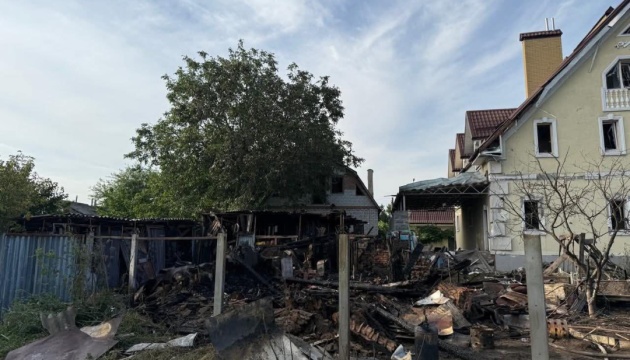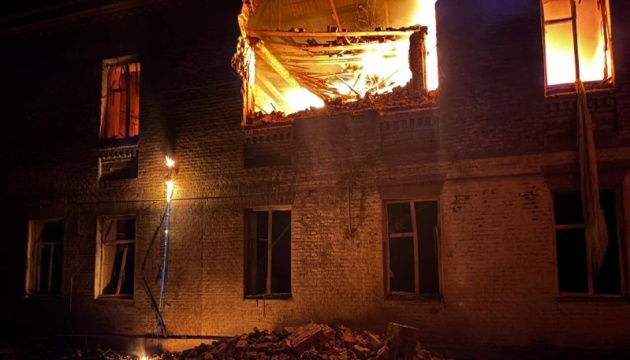No plans to extend preferential import regime for electric vehicles – Hetmantsev
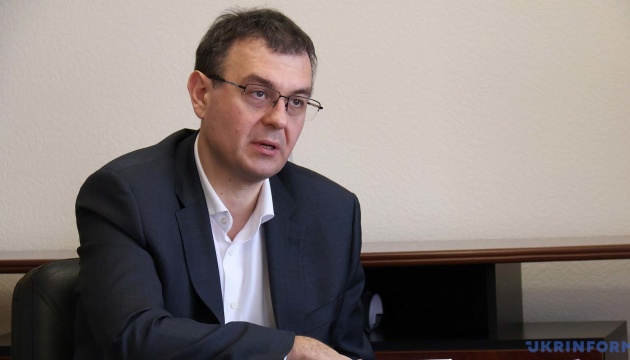

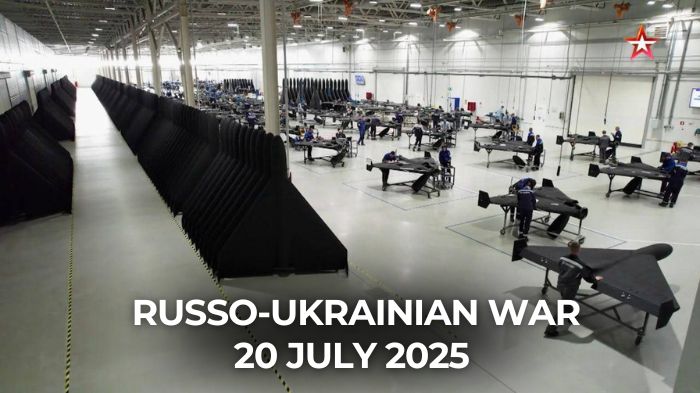
 |
Ukraine just solved the hardest math problem in modern air defense – with a 1970s German gun. The German-made Gepard gun vehicle is one of Ukraine’s best defenses against swarms of Russian Shahed drones. |
| Everyone’s talking about Usyk’s knockout—but did you know he can hold his breath longer than dolphins?. While you were watching Usyk flatten Dubois, you probably missed the wildest fact about boxing’s new favorite champion. |
 |
Italy’s giving a concert for Putin—and Europe is paying. Banned everywhere else, Putin’s favorite conductor Gergiev finds European taxpayers willing to fund his comeback in Campania |
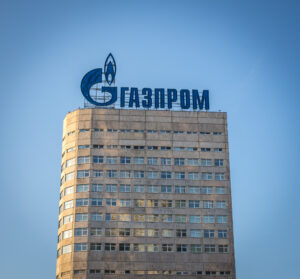 |
Hackers erased Gazprom’s digital brain in catastrophic cyber strike, HUR source says. Ukrainian operatives reportedly wiped servers, clouds, and backups, crippling the control systems of Russia’s gas empire. |
 |
Ukraine’s war cabinet was hit by a perfect storm. Zelenskyy just hit reset. Ukraine just overhauled its government for the first time since Russia invaded. No one voted. |
Frontline report: Russia sent troops through a quiet sector near Kharkiv — Ukraine sent a T-64 to greet them. With its summer offensive stalled, Russia pushed near Kharkiv—and ran straight into a Ukrainian tank.
Russian follow up strikes delay Ukrainian rescuers who rush to put out fire after deadly drone attack. A 78-year-old woman died in Sumy Oblast near the front line and multiple families sustained injuries from direct strikes on residential buildings.
Moscow suffers largest drone attack in months, with drone debris hitting residential building. The attack also forced the diversion of 134 commercial flights to alternative airports.
Russia shows off giant Shahed factory and US trucks used to launch drone strikes on Ukraine. Kremlin footage shows rows of Shahed drones in production and American pickups launching them toward Ukraine, as Moscow ramps up long-range attacks.
Pentagon opens drone combat school in Indiana: “If your stuff’s not in Ukraine, it’s not serious”. The Pentagon’s new drone school launches next month, with Ukrainian military advisors set to observe and give feedback.
Forbes: Tiny Ukrainian drone boat Ursula targets hidden Russian sites no weapon has reached before. Ursula is just one meter long, but it can slip into Russia’s shallow rivers and swamps to launch drones deep behind enemy lines.
US envoy sees how Russia bypasses sanctions and uses Western components in weapons that kill Ukrainians. Ukrainian intelligence organized an exhibition of Western-manufactured electronics found in captured Russian weaponry used against civilian targets across Ukraine.
German general warns Ukraine faces Russian drone increase from 500 to 2,000 nightly while Kyiv develops special drone interceptors. Major General Christian Freuding emphasized the economic mismatch between $5 million Patriot missiles and Russia’s $50,000 drones, advocating for preemptive action and industry-developed interception technologies.
Azerbaijan demands Russia admit guilt in downing passenger jet with air defense as Moscow stonewalls investigation. President Ilham Aliyev announced the move to international courts after Azerbaijan rejected Russian explanations blaming Ukrainian drones for the incident.
Usyk defeats Dubois with “Ivan” punch to reclaim undisputed heavyweight crown for Ukraine. Minutes after knocking out Daniel Dubois at Wembley, Oleksandr Usyk thanked the Ukrainian soldiers who “allow me to be here now.”
Read our earlier daily review here.
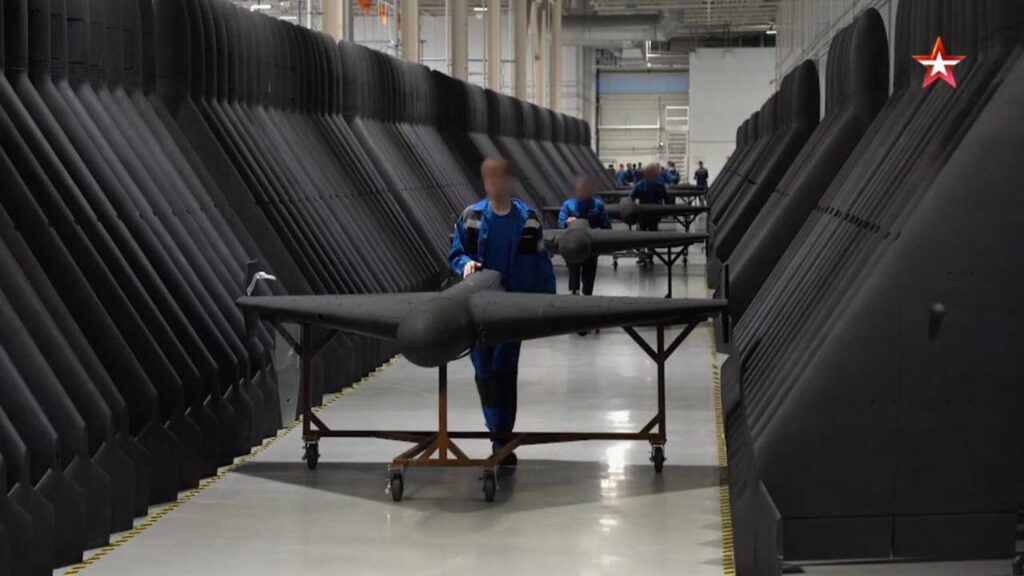
Russia has released two new propaganda videos showcasing its growing drone warfare capabilities—both focused on the Geran-2 suicide drones, the Russian version of Iran’s Shahed-136. The videos, aired by Russian state media on 14 July, offer a chilling look into Moscow’s drone production and deployment—and signal a shift toward mass-scale aerial warfare.
The timing of the videos coincides with a sharp escalation in Russia’s drone attacks on Ukraine. On 9 July, Moscow launched its largest single-day aerial barrage of the war, firing 741 drones and missiles in one night.
Analysts now warn that Russia may soon be capable of launching 1,000 to 2,000 drones per day, aiming to saturate Ukraine’s air defences and wear down Western military support. The strategy is simple: overwhelm with volume, exploit cost asymmetry, and stretch Ukrainian and NATO resources to the breaking point.
The first video, broadcast via Zvezda, takes viewers inside the Yelabuga factory in Tatarstan. Located more than 1,300 km from Ukraine, the facility reportedly produces over 5,000 Geran‑2s a month, with 18,000 built in the first half of 2025.
Satellite imagery and facility layout suggest large sections of the plant are underground, enhancing its resilience to long-range Ukrainian strikes. The video highlights on‑site foundries, assembly lines, electronics shops—all sealed beneath reinforced structures.
Despite its distance from the front lines, Yelabuga has been repeatedly targeted by Ukrainian drones:
Yet, despite the assaults, production appears largely unaffected, with officials insisting the plant continues to operate “stably.”
The second video reveals drones launched from Dodge Ram 1500 pickup trucks—vehicles that seem American-made and potentially obtained in violation of Western sanctions. This mobile launcher method signals a shift toward faster, more flexible deployment and increased launch density.
Geran‑2 drones are designed for long-range strikes:
Despite their relatively low cost—$35,000–$50,000—they place significant strain on Ukrainian defences. A single Patriot interceptor, by contrast, costs over $5 million.
Ukraine reported this week that it had shot down its 30,000th Shahed drone, based on serial number analysis of drone fragments.
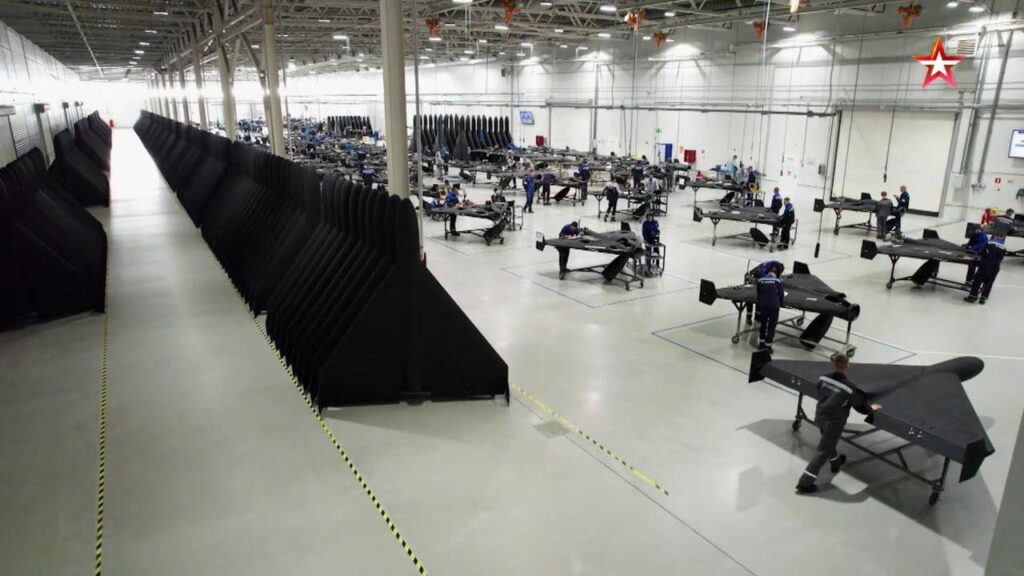
Together, they underscore a clear message: Russia is not just sustaining its drone campaign—it is scaling it.
It comes after US president Donald Trump gave Putin a 50 day deadline to agree to a ceasefire

© PA Wire
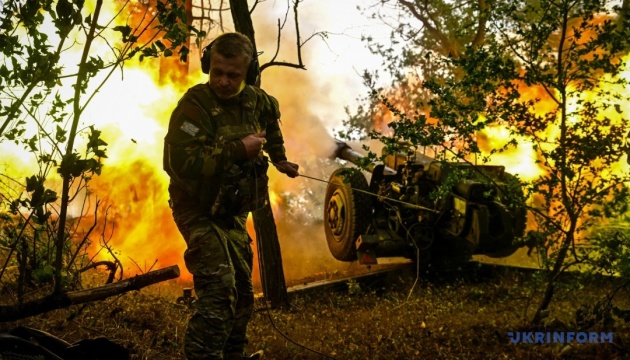

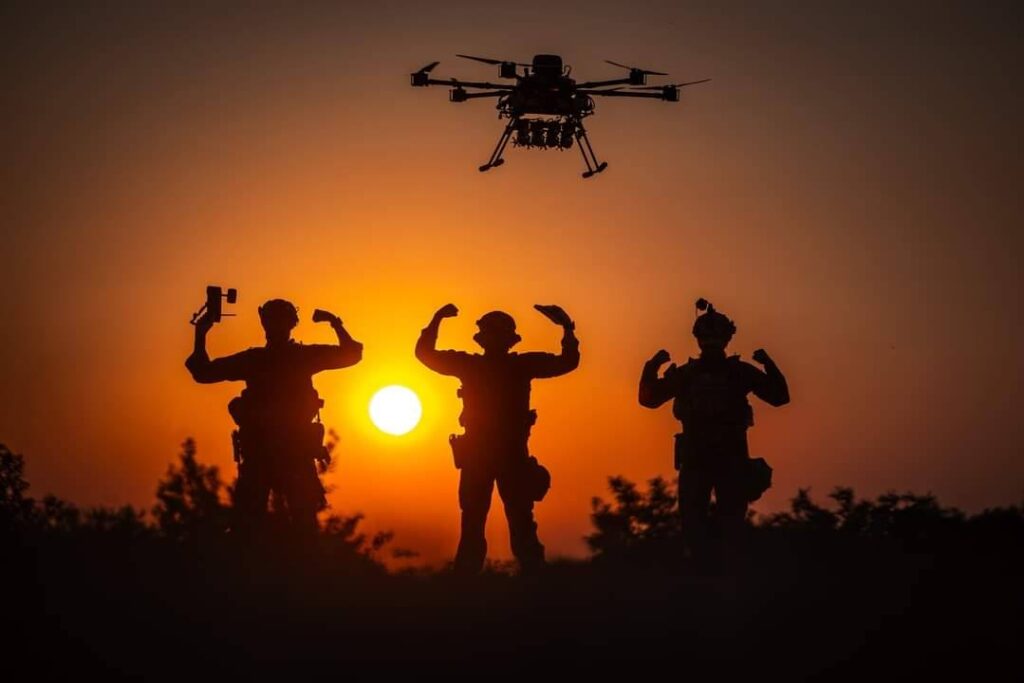
Next month, US troops will gather at Camp Atterbury, Indiana, for a new kind of “Top Gun” school—this one focused on Ukraine-style, kamikaze first-person-view (FPV) drones, Defense One reports. The event is part of the Pentagon’s Technology Readiness Experimentation (T-REX) program, which tests cutting-edge unmanned systems under simulated urban combat conditions.
The urgency reflects Ukraine’s rapid drone advances. In late 2023, Ukraine’s Ministry of Defense ramped up production and training of FPV drones, which quickly became a cornerstone of its battlefield strategy. By February, the Royal United Services Institute (RUSI) estimated these drones accounted for 70% of Russia’s battlefield losses—forcing a recalibration of US strategy.
Alexander Lovett, deputy assistant secretary of defense for prototyping and experimentation, said the US military is now building out FPV drone schools across the services. At T-REX, teams will square off in “red versus blue” drone battles, with counter-drone technologies also on display.
Ukraine’s success has shown that cheap, agile FPV drones can deliver outsized impact. While consumer drones have been used in war since Russia’s 2014 invasion, Ukraine’s scale and innovation pushed them from novelty to necessity.
Today, Ukraine is producing around 200,000 drones a month, according to CNA analyst Sam Bendett—a pace the US has yet to match.
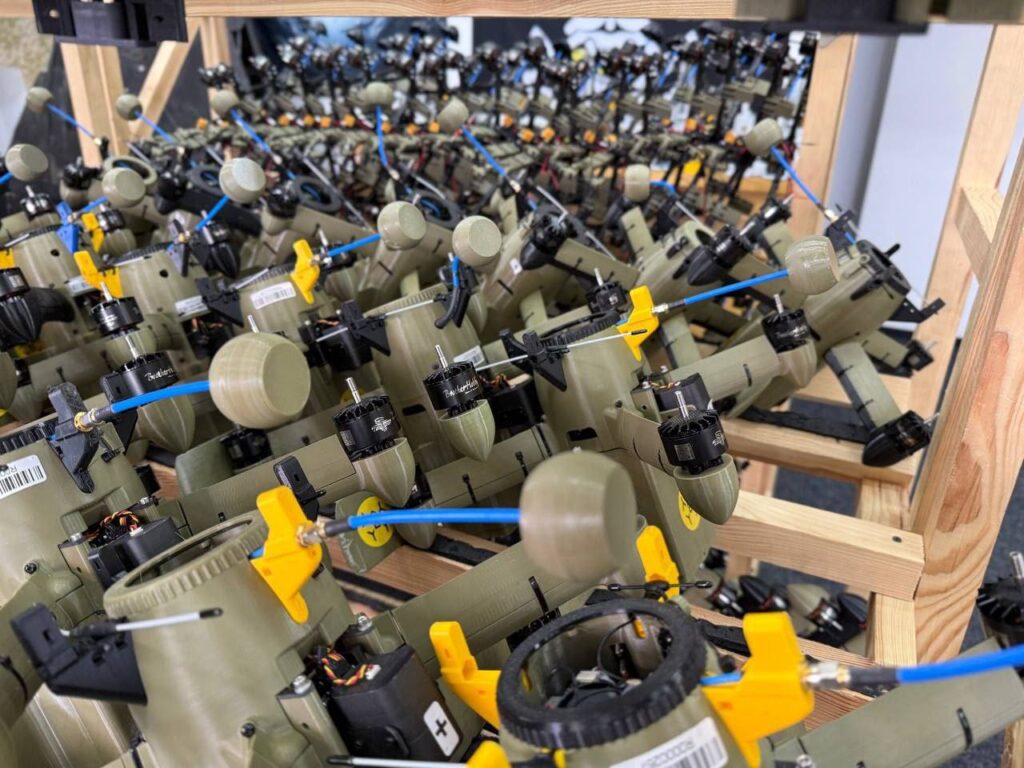
The Pentagon’s Replicator program, launched in 2023 to scale low-cost autonomous drones, has so far fallen short of expectations. In response, Defense Secretary Pete Hegseth announced a shift: allowing units to procure drones directly, without waiting on traditional acquisition pipelines.
“We need to be world class, and we will,” Hegseth said, calling the move a way to “open the aperture” to more suppliers and systems.
Emil Michael, the new undersecretary of defense for research and engineering, described the Pentagon drone showcase this week as “the beginning of American drone dominance.” But he acknowledged the US lags behind Ukraine, Russia, and especially China.
A major factor is training: Ukrainian forces regularly operate in jamming-heavy environments, something the US struggles to replicate due to FAA and FCC restrictions on jamming, which protect civilian networks.
Michael said drone manufacturers must internalize lessons from real-world conflicts like Ukraine’s. “That’s sort of endemic to becoming a drone manufacturer in the [United States],” he said.
To bridge that gap, Ukrainian military personnel will attend T-REX, offering firsthand feedback. One organizer told Defense One the feedback will likely be “blunt.”
“If you are not operating in Ukraine, then your stuff is not serious,” said Brandon Tseng, co-founder of Shield AI, which works with both US and Ukrainian forces. He noted many companies failed to survive Ukraine’s harsh electronic warfare environment.
Lovett echoed that challenge: “We have limited places where we can do that,” he said, referencing jamming exercises. The Pentagon is working with regulators to open more test ranges, but change will be slow.

According to Bendett, the US will likely never replicate China’s DJI dominance, but can lead through decentralized innovation. “We have to shake loose our own creativity,” he said.
Allowing commanders to choose their own drones—and learning directly from Ukrainian combat experience—may be key.
“We’ve opened the door for rapid acquisition,” said Michael. “If you’re a smart builder… you could build to those specifications.”
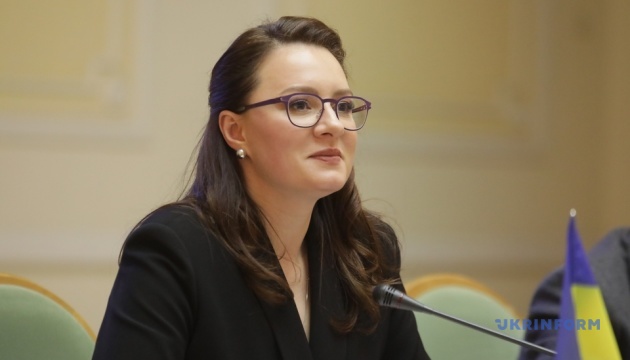
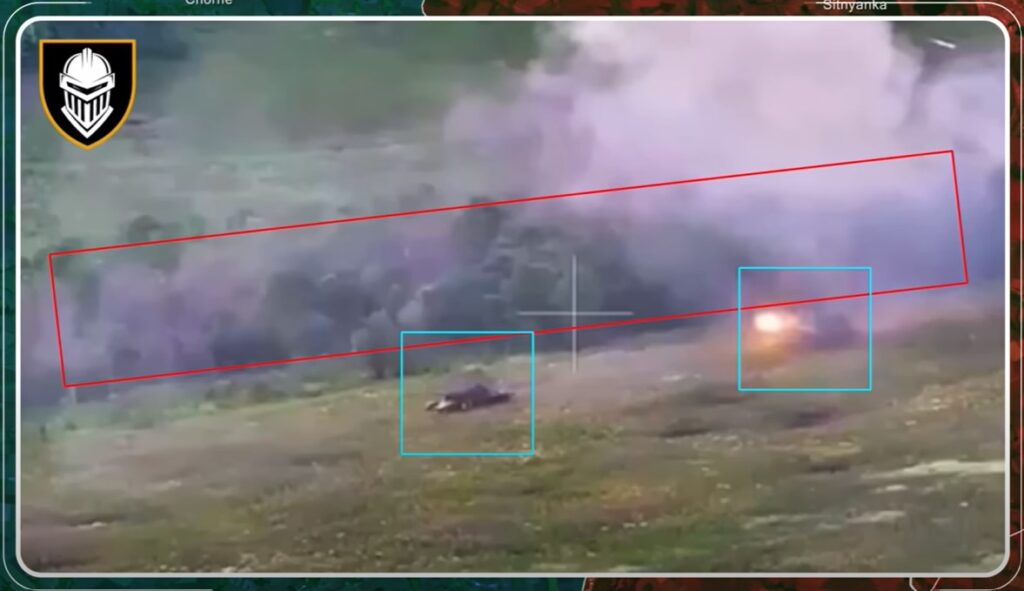
Today, there are interesting updates from the Kupiansk direction. Here, the Russians have opened a dangerous new axis to put the Ukrainian defense northwest of Kupiansk in danger. The Ukrainian command has acted decisively, sending in experienced tank units to smash the enemy and push him back over the border.
Russian forces have recently opened a new offensive axis near the Ukrainian border by swiftly capturing the village of Milove and adjacent forested areas. Having rapidly consolidated this foothold, Russian units are now attempting to advance deeper into Ukrainian-held territory, specifically targeting a line of villages culminating at Velykyi Burluk, the largest settlement in the area.
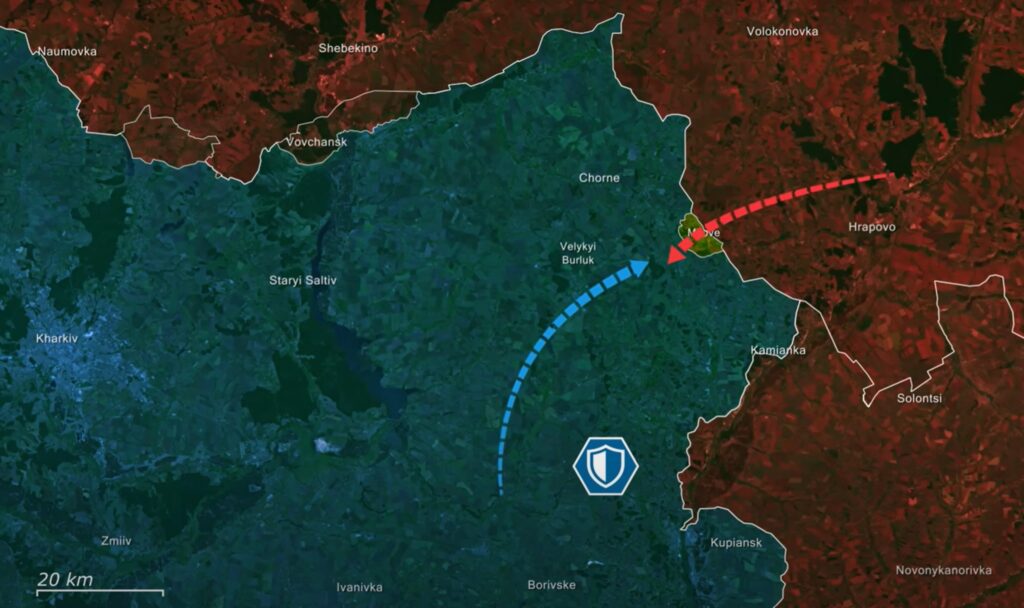
The strategic importance of Velykyi Burluk lies in its infrastructure, which offers the Russians critical space for troop accommodation, storage of munitions, and logistical hubs necessary for further pushes.
The Russian decision to initiate this new axis is driven by their broader strategic intent to sever critical communication and supply lines between Kharkiv and two key frontline cities, Kupiansk and Vovchansk. Russian forces around Vovchansk have been stuck in a stalemate for over a year, failing repeatedly to achieve significant breakthroughs. By introducing this northern axis, Russian commanders hope to renew their stalled momentum around Vovchansk, creating additional pressure from a fresh direction.
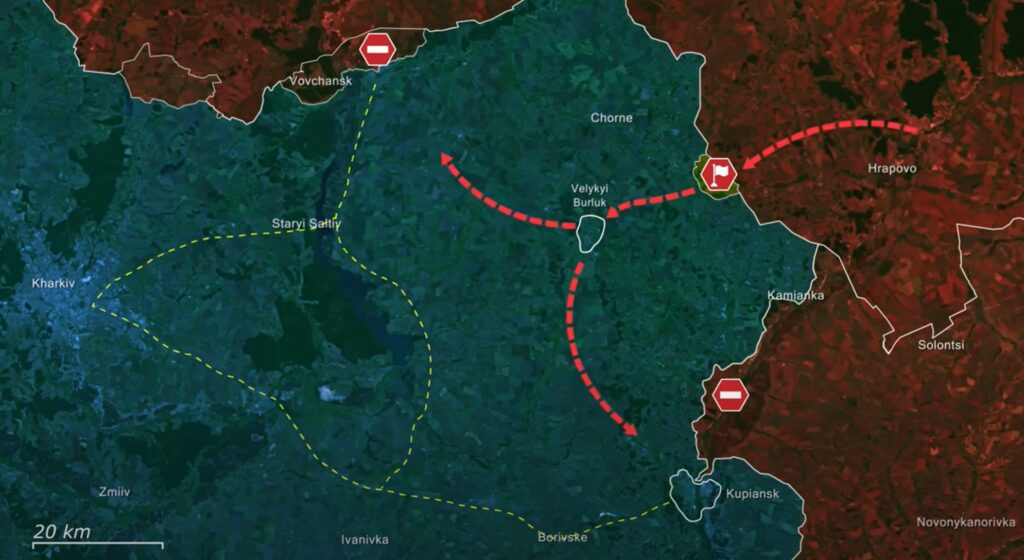
However, Kupiansk remains their central objective. Russian troops have faced substantial challenges near Dvorichna, unable to sufficiently expand their limited bridgehead on the western bank of the Oskil River. Thus, a successful push from the north toward Velykyi Burluk could support renewed thrusts along the Oskil and help fulfill Russia’s stalled ambition to encircle Kupiansk.
This Russian goal is gaining urgency as half the summer campaign season has already passed without meaningful progress. Russian tactical advantages in this new direction lie primarily in their proximity to their border-based supply lines, which have allowed relatively steady reinforcement and resupply efforts.
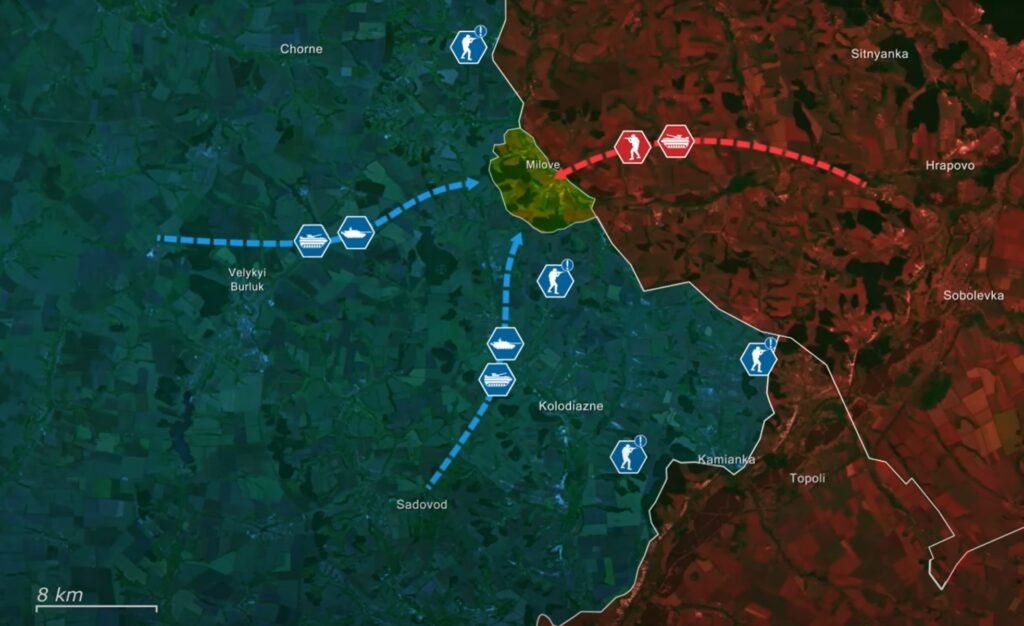
Furthermore, because the region around Milove had previously been relatively calm compared to more fiercely contested sectors, Ukrainian forces deployed there were thinly spread and not immediately prepared to resist a sudden, concentrated attack. Russians have exploited precisely these gaps in Ukraine’s extensive defensive line, advancing with small, mechanized units and infantry raids to quickly establish control over key positions.
Ukrainian forces, however, have swiftly recognized the severity of this emerging threat. Despite initially limited troop presence, Ukrainian commanders promptly redeployed mechanized reinforcements from nearby positions to counter this new threat. Ukrainian units are now actively conducting tactical hit-and-run raids, effectively leveraging Russia’s assault groups’ vulnerability.
Videos of these engagements vividly document Ukraine’s response, with one clearly showing a Ukrainian T-64BV tank and a BTR-4E Bucephalus engaging Russian infantry hidden within tree lines at point-blank range, effectively neutralizing the advancing enemy assault group.
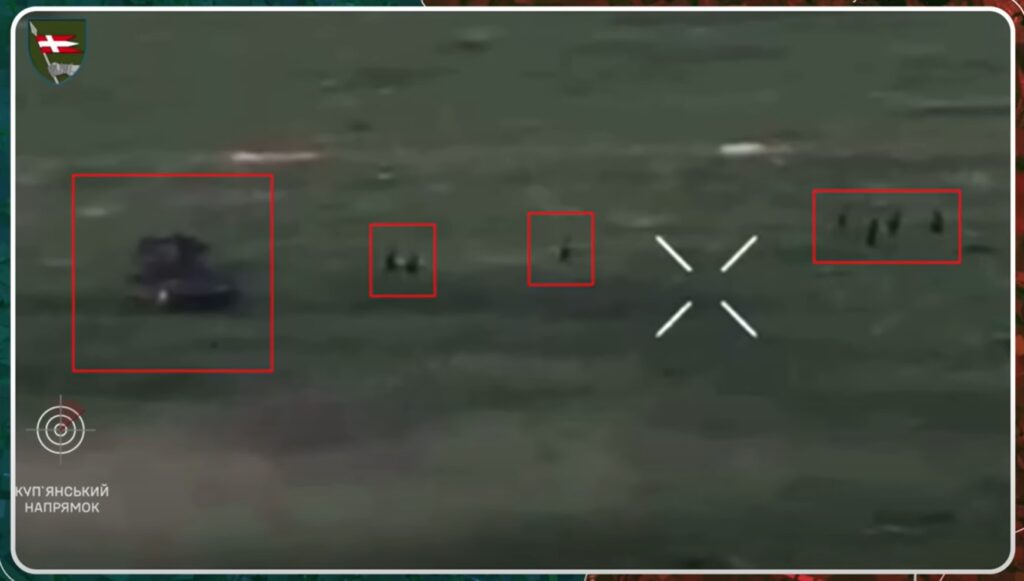
Meanwhile, Russian attempts to support their northern advance by expanding their precarious bridgehead near Kamianka over the Oskil River have met fierce resistance. Ukrainian forces recently thwarted a mechanized assault there, utilizing FPV drones and drone-dropped munitions to decisively halt the advance.
In the engagement, Ukrainian drone operators and infantry destroyed two Russian MT-LB armored vehicles, a BMP-2 infantry fighting vehicle, and eliminated 17 assault troops, demonstrating again their skillful use of drones in such situations.
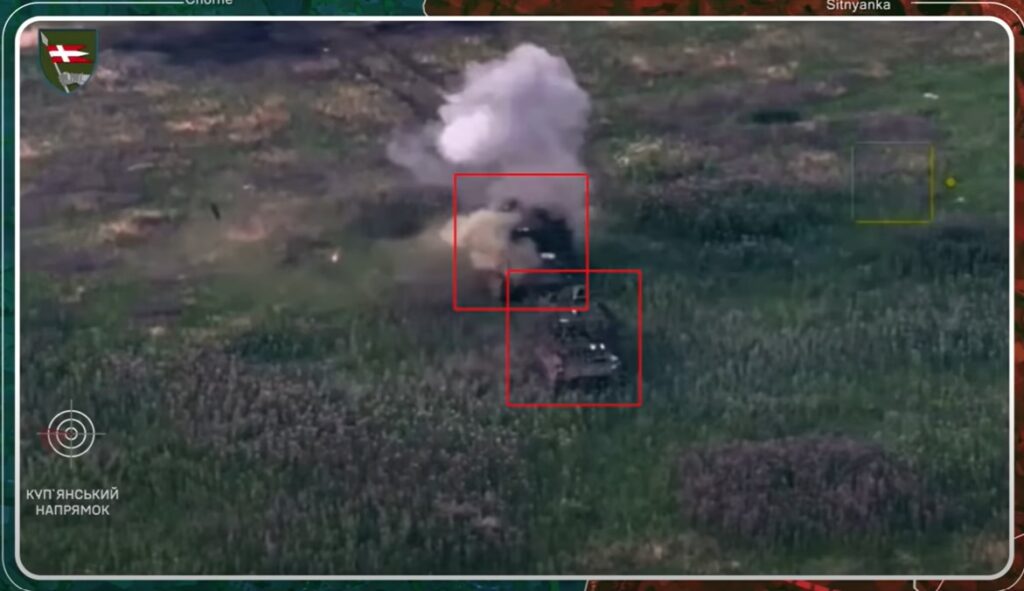
Overall, given the strategic significance of this region, it is critical for Ukrainian defensive operations that this new Russian offensive axis is decisively neutralized as early as possible. Ukrainian military leadership clearly understands the urgency and has mobilized forces to rapidly counter and contain Russian gains near Milove.
Their determined response aims to close existing defensive gaps swiftly, denying Russia further opportunities to advance toward Kupiansk, Vovchansk, or even threaten approaches to Kharkiv itself. It remains to be seen if Russian forces will simultaneously escalate their actions near Vovchansk to attempt a coordinated, multidirectional offensive to achieve the long-sought encirclement of Kupiansk this summer.
In our regular frontline report, we pair up with the military blogger Reporting from Ukraine to keep you informed about what is happening on the battlefield in the Russo-Ukrainian war.
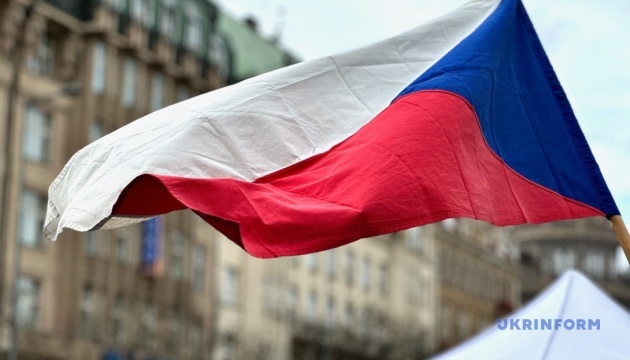

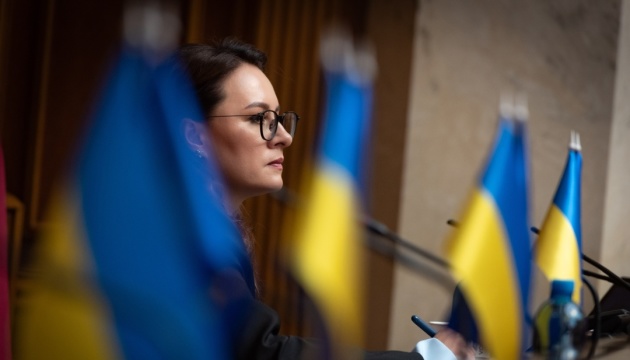

At least 57 Russian Iranian-made Shahed drones were launched at Ukraine overnight, according to officials

© Reuters

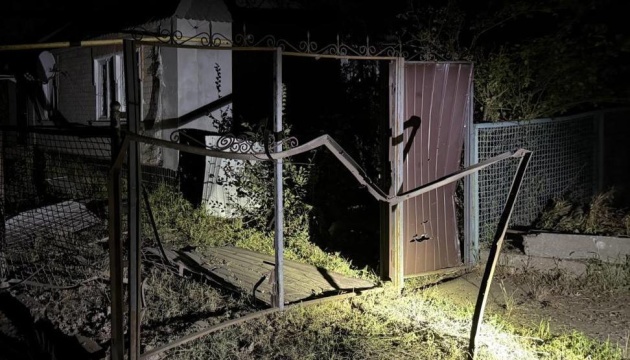
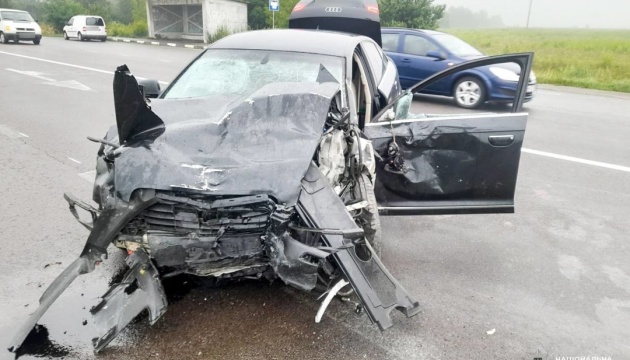
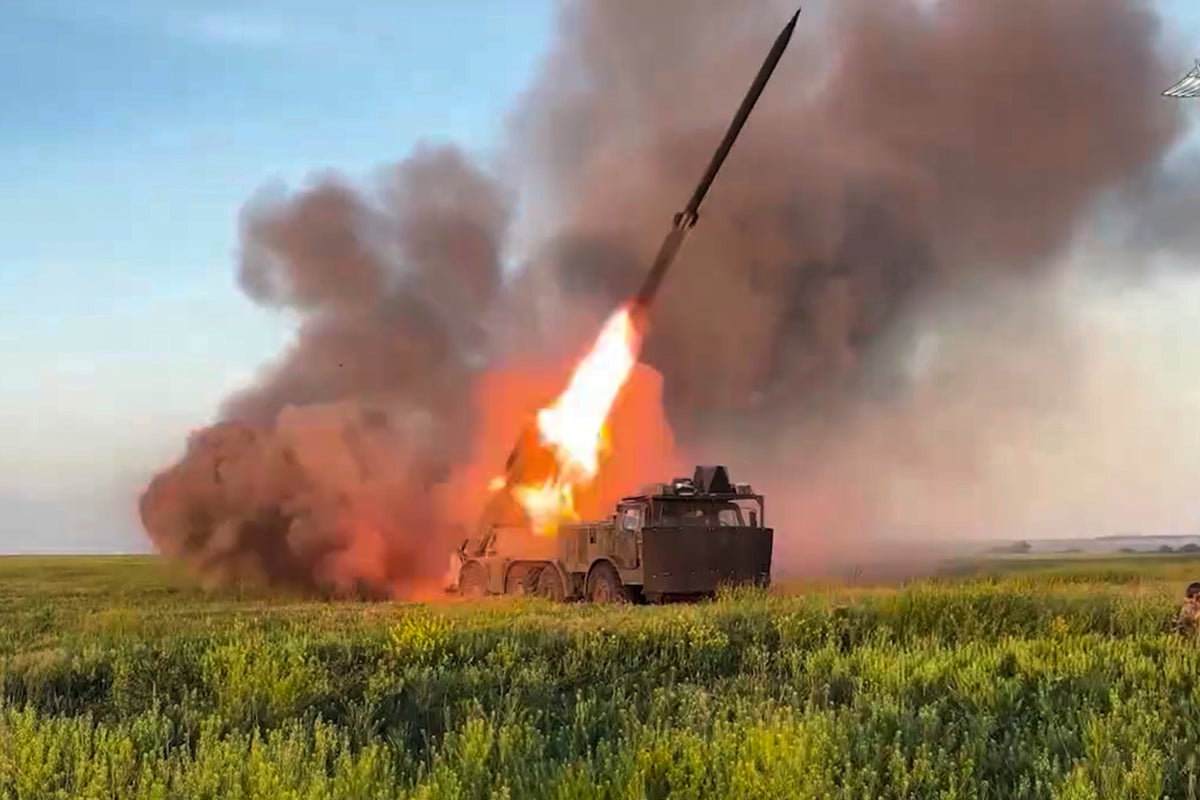
© Russian Defense Ministry Press Service
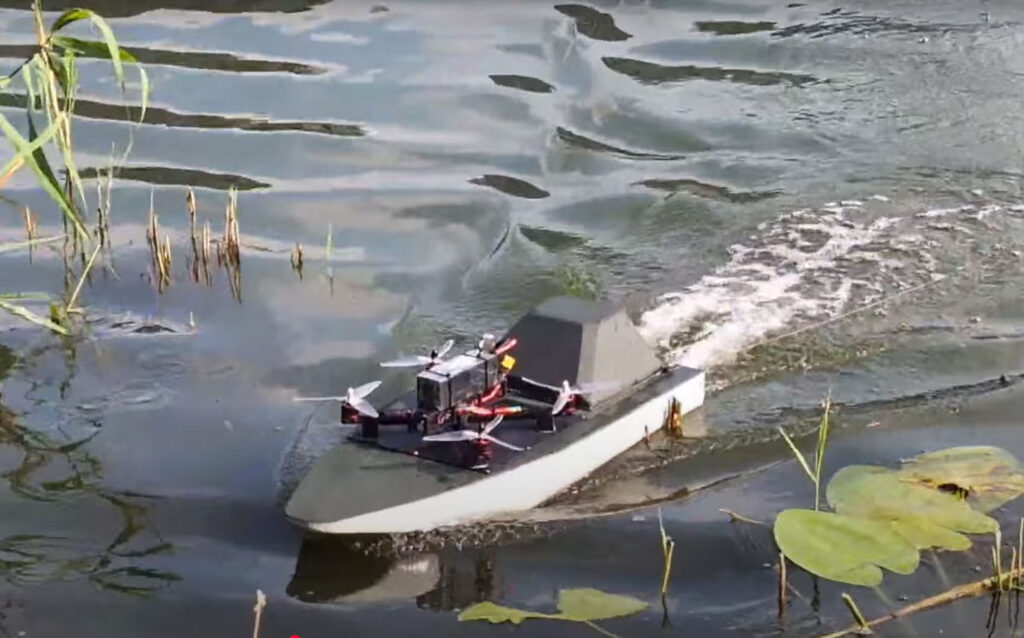
Ukraine has revealed a new compact naval weapon — Ursula — a tiny drone boat that can carry and launch FPV drones for attack and reconnaissance missions, Forbes tech correspondent David Hambling reports. The boat, only one meter (about three feet) long, was introduced in a video from the Association of Ukrainian Engineers and developed by startup ToviTechNet.
As Ukraine faces Russia’s full-scale invasion without access to modern fighter jets, warships, or long-range missile systems — and without formal military alliances — it has embraced asymmetric warfare. With limited conventional tools, Kyiv is turning to innovative, low-cost drone technologies to strike back across land, air, and sea.
“This robot vessel may be the world’s smallest aircraft carrier,” Hambling wrote.
The boat is designed for shallow waters, rivers, and swamps, giving Ukraine an edge in covert inland operations against Russian forces. It can also be equipped with sensors or explosives for kamikaze missions.
While Ursula’s demo video does not show a drone being launched, Ukraine has already used similar drone boats to launch FPVs in combat.
According to Militarnyi, Ukraine’s armed forces used USVs in January 2025 to strike Russian offshore platforms with drone-launched attacks. FPVs targeted defenders, while the boats deployed underwater mines and rammed the platforms, setting them on fire.
“Flying drones from USVs is already standard practice,” Hambling noted.
The Black Widow 2, another 1-meter-long USV, entered service in early 2025. It features:
Although not yet used as a drone carrier, its size and capabilities suggest it could be adapted.
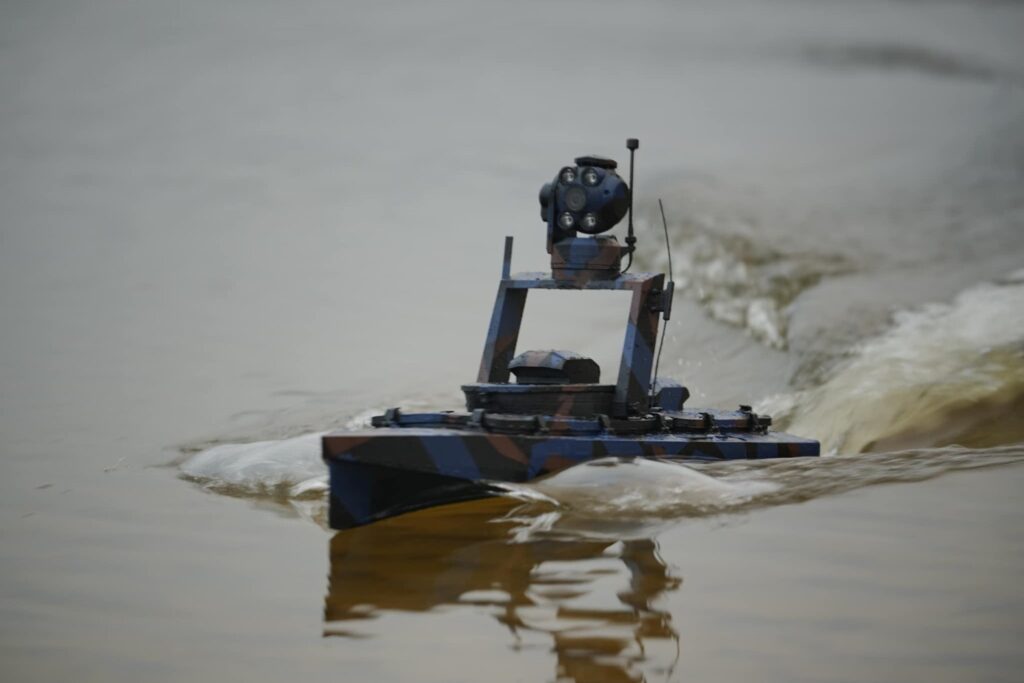
Recent footage shared by Ukrainian military sources shows FPV and fixed-wing drones launched from drone boats during attacks in Russian-occupied Crimea and along the Dnipro River.
In July 2025, Ukraine released a video showing FPVs launched from USVs striking components of a Russian Nebo-M radar system, including the radar command post.
“One FPV strike is enough to destroy an aircraft on deck,” Hambling wrote. “Taking out 95% of the attacking drones and boats may not be enough.”
Ukraine’s smaller USVs like Ursula currently rely on battery power, but future systems could follow models like:
These uncrewed platforms have already crossed oceans and could one day carry drones across the globe, enabling attacks from the sea into any coastal zone.
“They are inexpensive and stealthy… and could cover the world’s oceans,” Hambling noted.
Ursula might be tiny, but its implications are big: FPV drone warfare has now gone naval. What looks like a toy can silently carry deadly drones into enemy territory — from inland rivers to coastal defenses.
As Ukraine pushes drone innovation further, Ursula is a glimpse of how miniature drone boats could reshape future conflicts, one river or shoreline at a time.
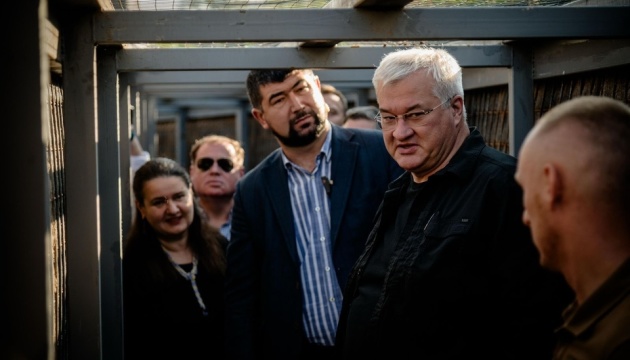
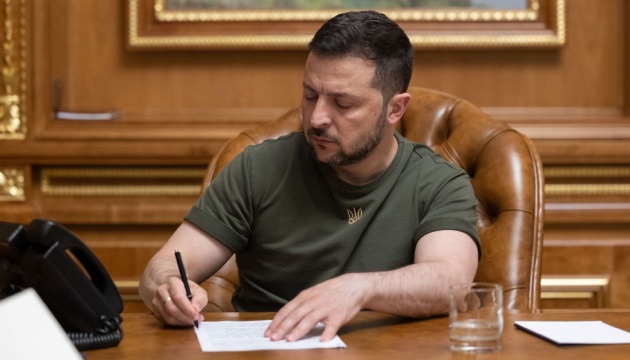

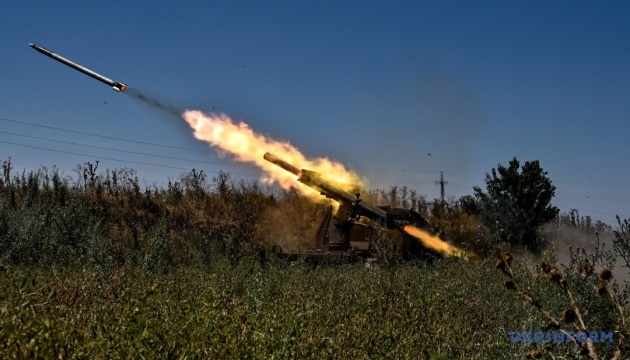
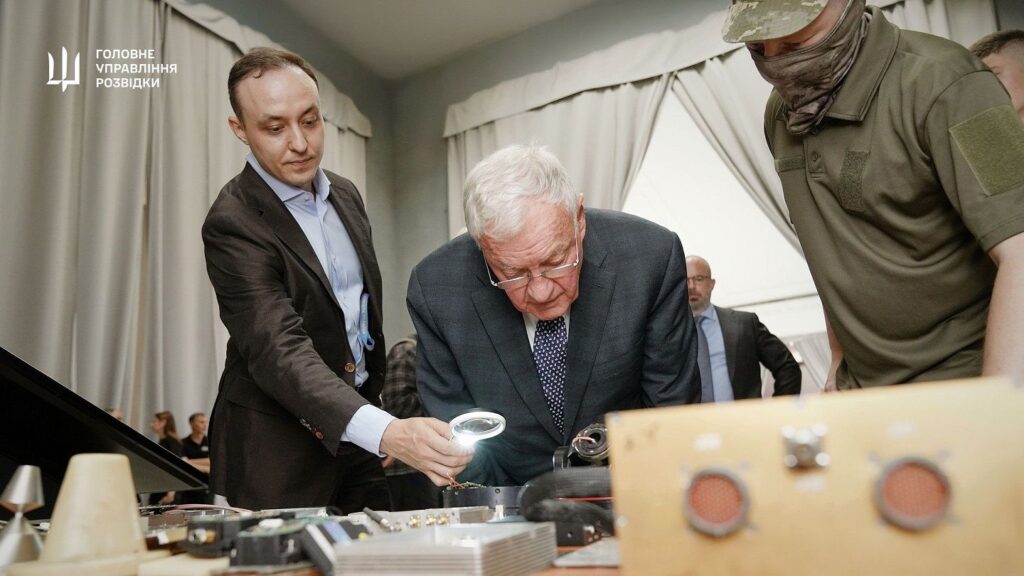
Keith Kellogg got an uncomfortable look at how Western sanctions on Russia are failing. During his visit to Kyiv, the US Special Representative to Ukraine examined Western-made electronics that Ukrainian intelligence pulled from destroyed Russian weapons—the same components fueling attacks on Ukrainian cities.
The exhibition was coordinated by the War&Sanctions portal of the Main Intelligence Directorate, working alongside the Defense Forces of Ukraine and the Kyiv Research Institute of Forensic Expertise. The display featured components extracted from destroyed or captured Russian weaponry by Ukrainian military intelligence personnel.
Among the items presented to Kellogg were Western elements found in Iranian-Russian Shahed kamikaze drones, also known as “geranium” drones, and Russian “gerbera” drones. These weapons systems have been consistently deployed against civilian targets in Ukraine.
But the problem runs deeper than drone components. Ukrainian analysts identified precision microelectronics critical for manufacturing high-accuracy weapons systems. Russia’s defense industry acquired these through what intelligence officials call “gray schemes”—unofficial networks designed to bypass sanctions.
“The international community must strengthen control over compliance with sanctions imposed on Moscow,” said Cipher, a Main Intelligence Directorate serviceman. “Manufacturers should take a more responsible approach to controlling their products in international markets.”
Head of Ukraine’s Defense Intelligence Kyrylo Budanov also warned Kellogg during their meeting in Kyiv that Russia’s war ambitions extend far beyond Ukraine and are projected to last until 2036, including preparations for a major conflict not only against Ukraine but also NATO.
Earlier, President Zelenskyy highlighted a significant loophole in international sanctions that allows Russia to continue producing its nuclear-capable Oreshnik intercontinental ballistic missiles using Western technology.
In 2024, Russia increasingly relied on North Korean KN-23 ballistic missiles to strike Ukraine, while analysis of missile fragments revealed that these weapons contain significant Western-made electronic components, primarily produced by companies from the US, the Netherlands, the UK, and Switzerland, some manufactured as recently as 2023.
These foreign parts include crucial guidance system circuitry without which the missiles could not function, highlighting that the missiles are reliant on imported Western technology despite sanctions.
Experts believe China acts as an intermediary in supplying these components to North Korea, raising concerns about loopholes in export controls and the illicit trade fueling Russian missile capabilities.



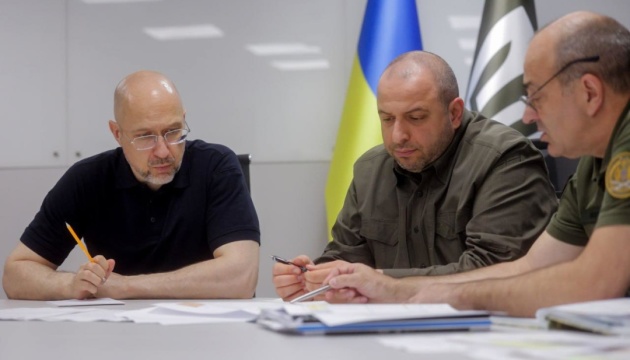


Seven months after an Azerbaijan Airlines plane crashed near Kazakhstan, killing 38 people, President Ilham Aliyev has had enough of Russia’s stonewalling.
Azerbaijan is preparing legal documents for international courts, targeting Russia over what Baku calls the deliberate downing of its civilian aircraft. The move escalates a diplomatic crisis that has simmered since 25 December, when flight J2-8243 was went down near Aktau.
Why the dramatic step? Russia’s investigation has produced nothing but bureaucratic delays, according to President Aliyev.
“Azerbaijan’s Prosecutor General keeps writing to Russia’s Investigative Committee,” Aliyev told reporters, as reported by AZERTAC. “The response is always the same: ‘the investigation continues.'”
But Azerbaijan isn’t buying it. “For us, everything is clear. We know what happened, and we can prove it. And we know that Russian officials also know what happened,” Aliyev said bluntly.
Flight J2-8243 left Baku bound for Grozny, Russia’s republic of Chechnya, that December morning. It never arrived.
Instead, after multiple course changes, the plane crashed hundreds of miles off course near Aktau, Kazakhstan, killing 38 people aboard.
Russian authorities quickly blamed bird strikes and bad weather—fog had closed Grozny airport, they said, forcing the reroute.
The explanation unraveled under scrutiny. Flight tracking data from Flightradar24 showed the plane’s GPS signal had been jammed near Grozny. More damaging: social media photos revealed puncture marks across the aircraft’s tail section that looked suspiciously like shrapnel damage.
OSINT analysts compared the damage patterns to known effects of Pantsir air defense missiles. The same morning, Grozny airport had implemented “Carpet” protocols—emergency closures during Ukrainian drone attacks.
Earlier, Azerbaijan’s President already stated that the aircraft was damaged by external fire, caused by electronic warfare systems that rendered the plane uncontrollable, and ground fire that severely damaged its tail.
Aliyev emphasized that the plane was shot down accidentally by Russian air defenses responding to threats in the area, and he condemned the poor coordination and failure to close Russian airspace.
The Azerbaijani president also dismissed Russian explanations that a Ukrainian drone was responsible. “There were two attacks on the aircraft. So imagine: a Ukrainian drone flies in, targets the Azerbaijani aircraft, hits it, falls, and then attacks again. This is a kindergarten story,” he said.
Meanwhile, Ukraine’s intelligence chief Kyrylo Budanov stated flatly that a Russian missile caused the crash, likely fired during anti-drone operations around Grozny.
Baku has outlined four non-negotiable demands:
Russia’s response? More delays.
Aliyev referenced the decade-long legal battle over Malaysian Airlines flight MH17, which Russia shot down over Ukraine in 2014.
“We are ready to wait ten years, but justice must prevail,” he said.
Only in 2025, after more than ten years, the European Court of Human Rights (ECHR) issued a historic ruling holding Russia responsible for the downing of MH17, recognizing Russia’s effective control over separatist territories.
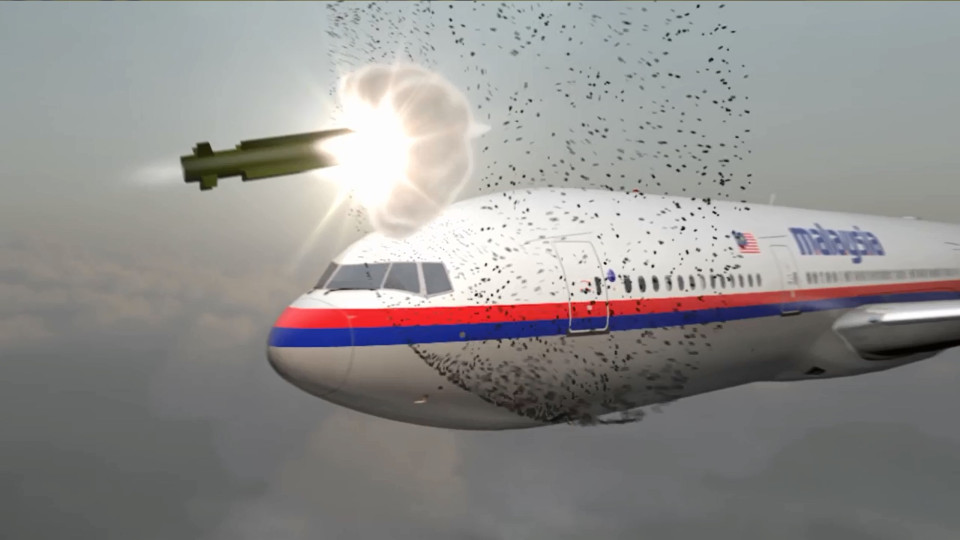
In February 2025, Azerbaijan also officially expelled Rossotrudnichestvo, the main Kremlin propaganda and soft power agency, from its territory, citing the protection of national interests and refusal to tolerate external interference. Azerbaijani authorities took control of the agency’s headquarters in Baku, the so-called Russian House, after discovering it operated without proper registration.
Rossotrudnichestvo, known for orchestrating pro-Russian rallies and suspected intelligence activities, was seen as an instrument of Kremlin influence and disinformation.
Azerbaijan expressed growing tensions and openly criticized Russia, including suspending cultural events linked to Russia and detaining Russian journalists suspected of intelligence activities, so their relations have sharply deteriorated.
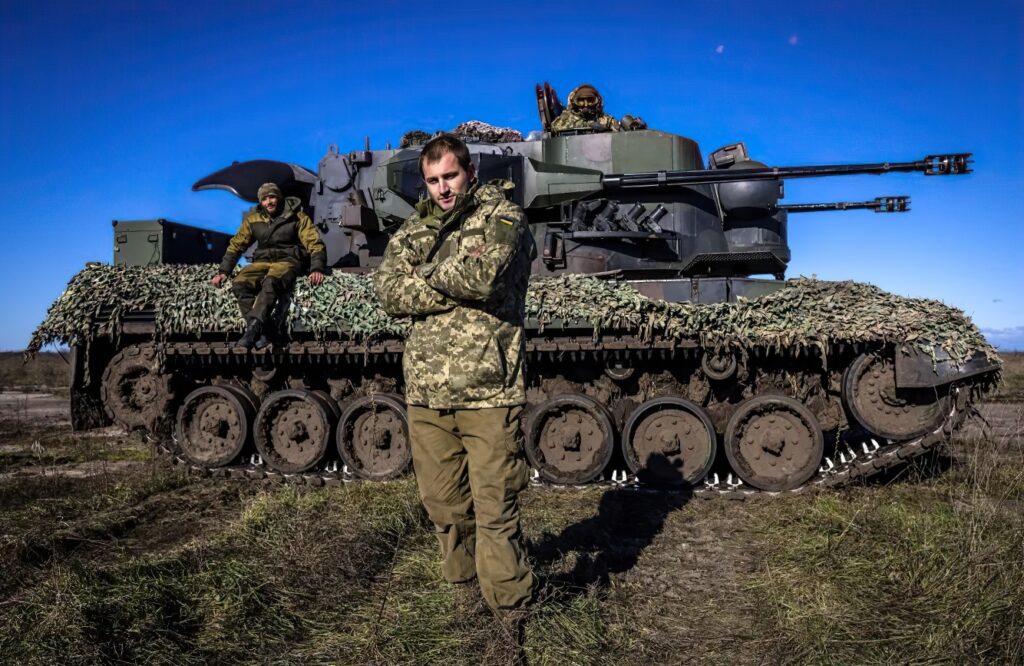
An anti-aircraft vehicle from the Cold War is enjoying a dramatic second career in Ukraine—as a top killer of Russia’s Shaheds.
As the barrages of Shahed drones get bigger, more frequent and more destructive in Ukraine, it’s becoming clear which Ukrainian-operated weapons work best against the 200-kg drones, each hauling a 90-kg warhead thousands of km under satellite guidance.
German-made Gepard self-propelled anti-aircraft guns, or SPAAGs—each armed with a pair of radar-cued 35-mm Oerlikon autocannons—are some of the most efficient defenses against the Shaheds. “Automated 35-mm gun systems produce dense projectile clouds,” pointed out a Ukrainian air-defense developer who goes by their nom de guerre “Alchemist.”
Ukraine’s scores of Gepards, along with a much smaller number of more modern Skynex guns, “provide critical mid-range defense” against the devastating Shahed raids, swatting down the drones from a few kilometers away. “A German Gepard with twin 35-mm Oerlikon cannons once shot down multiple drones with a single burst,” Alchemist recalled.
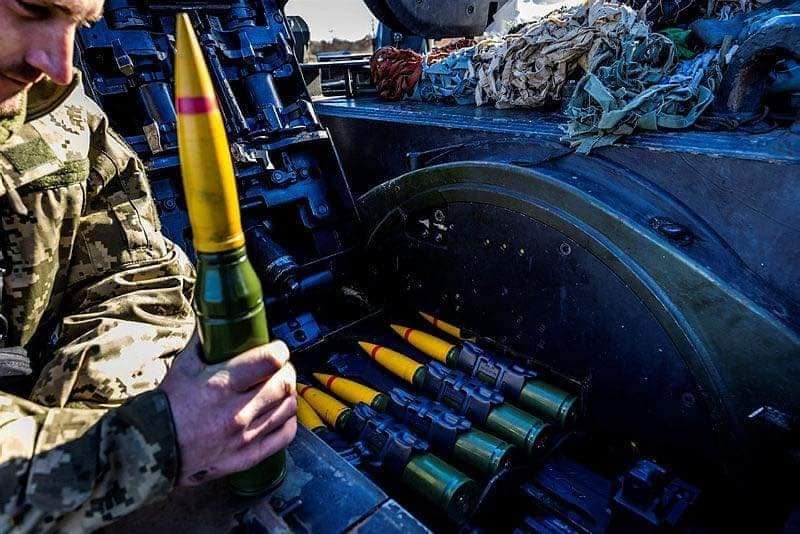
Russia’s Shahed attack drones are relentlessly striking Ukrainian cities. Defeating the normally propeller-driven drones is “the highest priority” in Kyiv, according to Taras Tymochko, a representative of the Come Back Alive foundation.
Since launching the first Shahed at Ukraine nearly three years ago, Russia has launched tens of thousands of the explosive drones: around 29,000 in all so far, according to Ukrainian analysts. A single Shahed may cost between $50,000 and $150,000.
The pace of the drone attacks is increasing. The scale, too. An attack on July 4 involved 539 Shaheds and decoy Shaheds, according to the Ukrainian air force. The air force claimed it shot down 268 of the drones, while another 208 flew off course, likely owing to Ukrainian jamming systems, which can interfere with the radio signals connecting the drones to their navigation satellites.
Despite the defensive effort, 63 Shaheds struck, damaging buildings and killing and wounding civilians. Six days later on July 10, 397 Shaheds swarmed in. Twenty-nine got through that time. Two days after that on July 12, an incredible 597 Shaheds and decoys droned toward Ukraine. The Ukrainians shot down or misdirected 577 of them. Twenty hit.
The low hit rate doesn’t worry Russian planners. “The Kremlin is willing to lose many Shaheds—about 75% of attacks fail—because mass waves are designed to exhaust air-defense systems,” Alchemist noted.
If Ukrainian forces engaged every Shahed with a surface-to-air missile, Ukraine’s entire stock of missiles could run out in weeks or months.
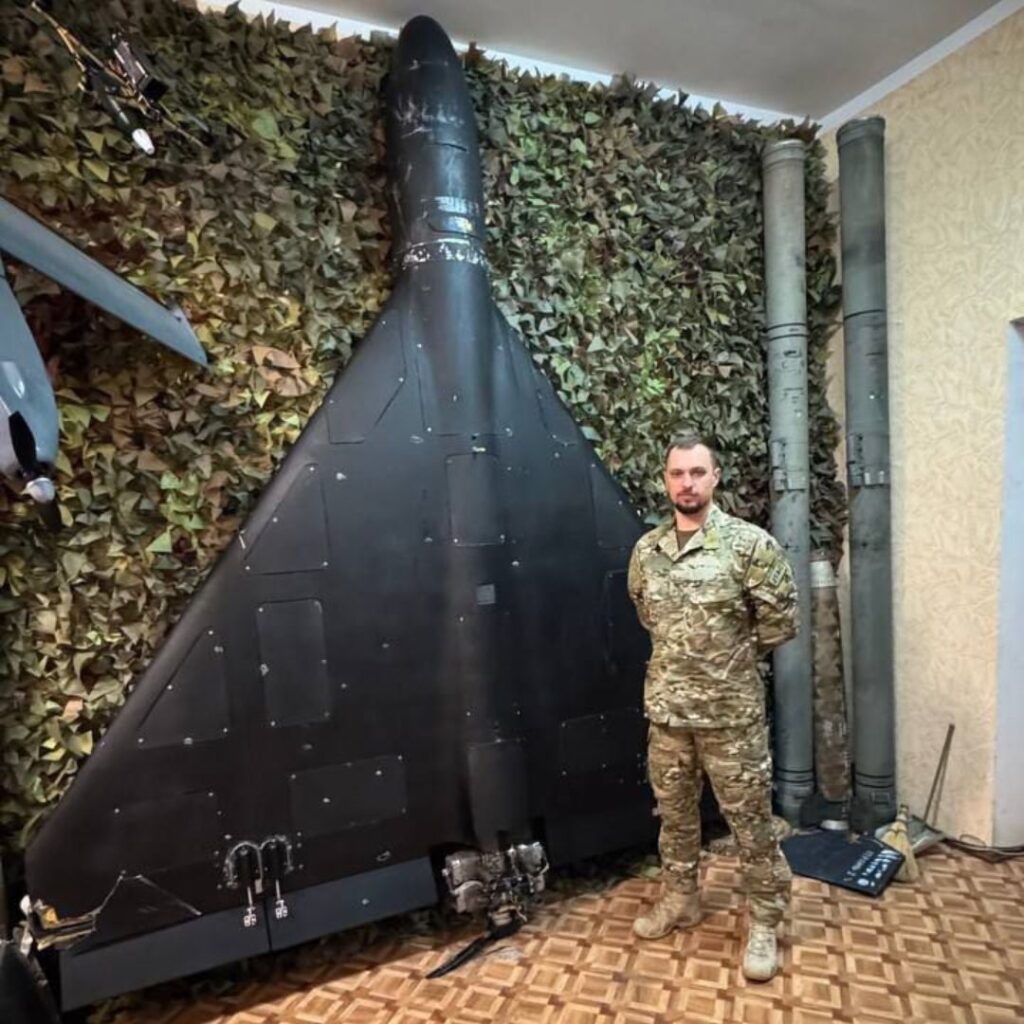
US missile-maker Lockheed Martin assembles around 600 multi-million-dollar Patriot missiles a year; Ukraine wages an intensive diplomatic campaign to ensure its six or seven Patriot batteries always have access to a few of the one-ton, 145-km-range missiles.
Smaller air-defense missiles are cheaper and more numerous, but not by much: The United Kingdom has loaned Ukraine $3.4 billion to buy 5,000 Lightweight Multimission Missiles, each weighing 13 kg and ranging 8 km. That’s more than half a million dollars per missile. A Shahed is far cheaper than even an LMM.
By contrast, Ukraine’s roughly 80 Gepards and nearly identical, ex-Jordanian Cheetah SPAAGs—all German-built but some sent by the United States—are cheap. The vehicles are decades-old, surplus to their original operators’ needs and simple and reliable by today’s standards.
<!– wp:html {“canvasClassName”:”cnvs-block-core-html-1745003537315″} –><center> <a href=”https://www.patreon.com/c/euromaidanpress” class=”custom-patreon-button” style=”display: inline-flex; align-items: center; justify-content: center; gap: 10px; padding: 15px 40px; font-family: ‘Inter’, sans-serif; font-size: 20px; font-weight: 600; color: white; text-decoration: none; background-color: #FF6B6B; border: none; border-radius: 8px; box-shadow: 0 4px 6px rgba(0, 0, 0, 0.1); transition: background-color 0.3s, transform 0.2s; cursor: pointer;”> <span style=”color: white;”>Become one of our 700+ patrons!</span> </a></center><!– /wp:html –>

The main cost of operating a Gepard is the cost of its 35-mm ammunition. After sending Ukraine all of its Cold War stocks of Gepard ammo in 2023, Germany paid munitions-maker Rheinmetall $181 million to restart production of the 1.5-kg and produce a fresh batch of 300,000. A handful of rounds is enough to down a drone.
A subsequent German contract paid for another 180,000 rounds that should arrive in Ukraine next year. Ukraine’s Gepards should have enough ammo to blast away every time Shaheds motor across the border.
For a Gepard crew, the cost of shooting down a Shahed might amount to a few thousand dollars. That, and the mobile gun’s accuracy, is why the Gepard is on the front line of Ukraine’s defensive campaign against the Shaheds.
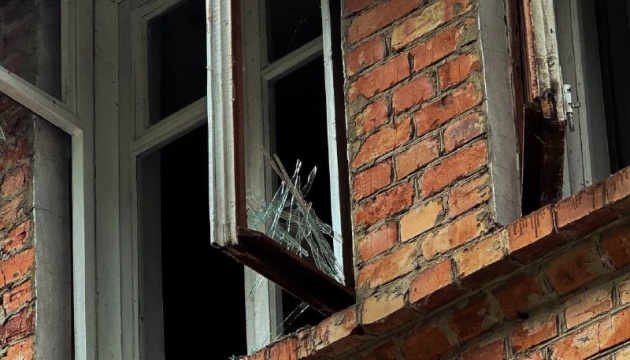
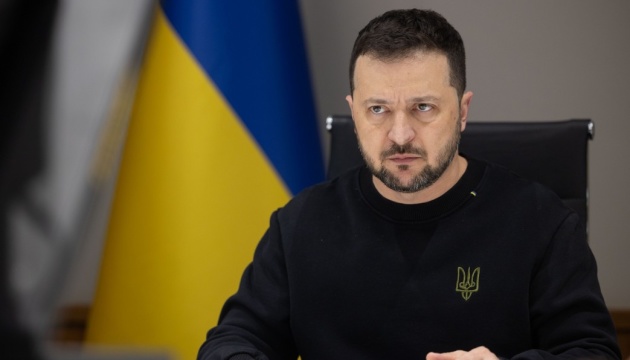

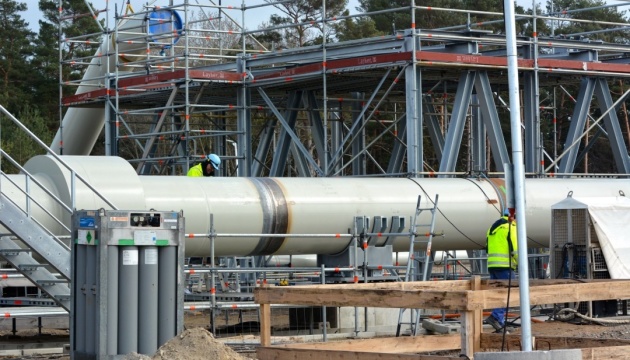

German Major General Christian Freuding urged Ukraine to develop more efficient air defense systems, warning that Russia aims to launch 2,000 drones simultaneously in future attacks.
So far, the largest single drone assault by Russia on Ukraine since the start of the full-scale invasion involved 728 Shahed-type and decoy drones, alongside 13 missiles, and occurred on 9 July.
Speaking on the Bundeswehr program “Nachgefragt,” General Freuding highlighted the economic disparity in current defense methods. The former chief military coordinator of German aid to Ukraine noted that using Patriot missiles costing over 5 million euros to intercept Shahed drones worth 30,000 to 50,000 euros represents an unsustainable approach.
“We must consider intelligent countermeasures,” Freuding stated, advocating for defensive systems priced between 2,000 and 4,000 euros per unit.
The general also suggested preemptive strikes targeting Russian aircraft, airfields, and military-industrial facilities as an alternative strategy. Ukraine has already demonstrated this approach works.
In response, Ukraine is rapidly accelerating the development and deployment of low-cost interceptor drones to counter increasingly frequent Russian drone attacks, especially the Iranian-designed Shahed kamikaze UAVs.
They’re capable of shooting down about 70% of incoming threats, nearly doubling the success rate of traditional mobile fire teams.
President Zelenskyy emphasized that while the technology is proven, Ukraine urgently needs international financial support to mass-produce and deploy these interceptors to defend against the escalating drone assaults.
In June, Ukraine received a significant $4 billion boost from the G7 summit to accelerate the mass production of these advanced drone interceptors. Four Ukrainian companies are engaged in developing these interceptors, two showing notable success, with large-scale production agreements secured with Germany and Canada.
The top Ukrainian UAV commander Robert Brovdi (aka Madiar) stated earlier that the war with Russia will continue beyond 2025, as Russian forces still send more infantry than Ukraine can destroy, while Ukraine faces shortages in mobilization resources and numerical inferiority.
He emphasized that “everyone who wanted to fight is already fighting,” so Ukraine’s strategy is shifting towards replacing infantry with unmanned ground-based drones and constructing a massive, multi-layered “drone wall” to intercept incoming Russian attacks. His Drone Line project aims to create a 10-15 kilometer “kill zone” to prevent enemy advances and includes boosting domestic production of drone munitions.
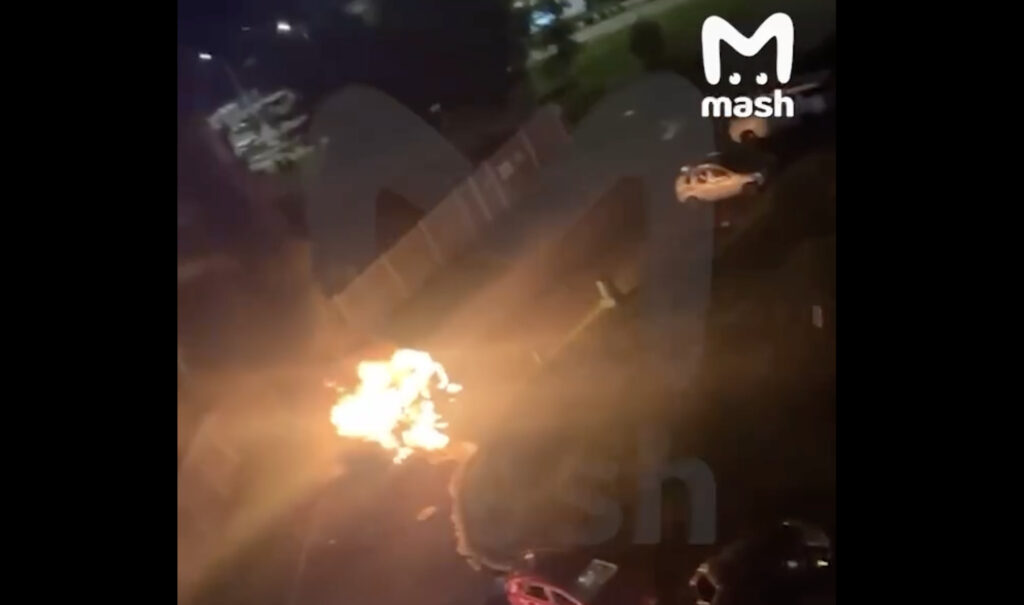
On the night of 20 July, drones targeted multiple Russian regions, including Moscow, in what officials described as the most significant drone assault on the capital since early May.
Russian air defenses shot down 19 drones over the Moscow Oblast during the overnight assault, with debris igniting vehicles and striking the upper floors of a residential building in the suburb of Zelenograd, according to the Russian Ministry of Defense.
In total, 98 Ukrainian drones were intercepted across eight regions during the 20 July attack.
According to Russian news agency Agentstvo, Telegram channels linked to Russian security forces shared video footage of the burning cars and building damage. However, it remains unclear where the drones were heading exactly before their fragments hit civilian areas.
Moscow faced one of the heaviest drone attacks since May.
— Euromaidan Press (@EuromaidanPress) July 20, 2025
Russia claims:98 drones intercepted in total across 8 regions.
19 shot down over the Moscow Oblast
Debris from the intercepted aircraft struck the upper floors of a residential building and ignited cars in the… pic.twitter.com/v4z6Jk6Wq8
“There were no serious damages or casualties,” Moscow Mayor Sobyanin stated, according to reports from Russian media outlets.
However, the attack significantly disrupted air traffic across the region, with authorities implementing flight restrictions at four major airports: Domodedovo, Sheremetyevo, Vnukovo and Zhukovsky. Additional restrictions affected airports in Yaroslavl, Nizhny Novgorod and Kaluga. Russian aviation authority Rosaviatsia reported that 134 flights were diverted to alternative airfields due to these safety measures.
According to Russian Telegram channel Astra, passenger crowds formed at Sheremetyevo airport, though Rosaviatsia’s press service disputed claims of significant passenger accumulations at Vnukovo airport.
This marks the ninth day Moscow has faced drone attacks since early July, representing a significant escalation in Ukraine’s aerial campaign against the Russian capital.
Meanwhile, Russian forces launched widespread drone attacks across several Ukrainian regions on the night of 20 July, using 57 Shahed drones and decoy aircraft, resulting in at least one civilian death and several injuries while causing extensive damage to residential areas.
The deadliest incidents occurred in Sumy Oblast, where a 78-year-old woman died and three homes were destroyed, and rescue efforts were hampered by follow-up Russian strikes targeting first responders.
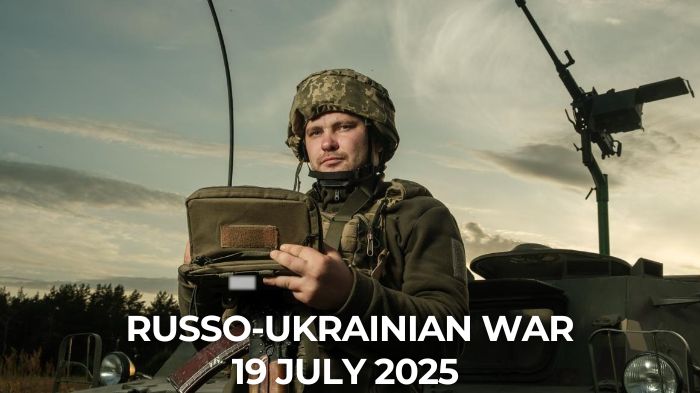
| The punch that dropped Dubois was named Ivan. Usyk’s whole life is that weird.. While you were watching Usyk flatten Dubois, you probably missed the wildest fact about boxing’s new favorite champion. |
 |
Italy’s giving a concert for Putin—and Europe is paying. Banned everywhere else, Putin’s favorite conductor Gergiev finds European taxpayers willing to fund his comeback in Campania |
 |
Hackers erased Gazprom’s digital brain in catastrophic cyber strike, HUR source says. Ukrainian operatives reportedly wiped servers, clouds, and backups, crippling the control systems of Russia’s gas empire. |
 |
Ukraine’s war cabinet was hit by a perfect storm. Zelenskyy just hit reset. Ukraine just overhauled its government for the first time since Russia invaded. No one voted. |
 |
Ukraine nationalized its way out of crisis—now it can’t stop making money. The emergency worked too well. And that’s actually a dangerous thing. |
HUR drones hit eight Russia’s air defense radars and launchers near Donetsk — video shows strikes. Intelligence operators destroyed five high-tech detection systems built for complex airspace defense, and two S-300V launchers.
Russian saboteurs tried to sneak into Donetsk’s Pokrovsk—Ukrainian troops erased them, Syrskyi says. Ukraine’s defenders reportedly spotted and eliminated a Russian sabotage group during a failed incursion into the city.
Drone barrage targets Moscow and Rostov — fires, outages, train delays follow. No significant damage to any key asset has been confirmed. Power was knocked out in several settlements, and train stations were paralyzed for hours in stifling conditions.
Ukraine’s new 15-minute bridges: Plastic cubes, no delay, full mobility (video)
. Engineers from Ukraine’s Steppe Brigade are fielding modular plastic bridges that deploy in just 15 minutes, giving troops rapid mobility across rivers in active combat zones.
US plans to develop new cruise missile modeled on Ukrainian war needs and capable to strike targets over 450 km away. The US Air Force’s upcoming LACM will carry a heavy warhead, dodge GPS jamming, and strike targets 450 km away.
NYP: How small Ukrainian factories are building drones that hunt Russian crafts — without draining millions. The NYP tours where engineers are building budget UAVs to overwhelm Moscow’s drone swarms.
British intelligence: Russia moves to erase Ukrainian language in occupied schools. Kremlin pushes a sweeping Russification drive targeting Zaporizhzhia and Kherson oblasts from September 2025.
Australia’s Abrams tanks arrive in Ukraine—first of 49, or most already?. Some outlets say initial delivery; others report the majority of promised armor has landed.
Italy faces backlash for hosting Russian conductor, who backs killings Putin’s regime, at UNESCO World Heritage palace. The July 27 event at the Royal Palace of Caserta has provoked outrage, with Ukrainian groups warning that hosting Putin’s favorite maestro desecrates cultural heritage and insults war victims.
EU declares Georgia’s path to bloc effectively frozen until free elections, as protests rage for eighth consecutive month. The European Parliament backs Georgian protesters, while condemning the suspension of democratic standards.
“He will risk everything in Ukraine”: Putin may be preparing for even harsher war in Ukraine after Trump’s ultimatum. Even with a collapsing economy and the threat of international isolation, Putin is poised to escalate his war. As Foreign Affairs puts it: the Kremlin leader will go to “extreme lengths” to avoid losing in Ukraine.
“I want to help Ukraine as much as I can”: American volunteer James joined Ukraine’s Army to build future. Known by his callsign “Sonechko,” James is part of a legion of foreign volunteers who’ve left their past lives behind to stand with Ukraine—some for justice, some for redemption, some for money.
Europol dismantles pro-Russian cyber army flooding Ukraine and its allies with attacks. A coordinated crackdown wiped out over 100 systems tied to Kremlin-backed NoName057(16) hackers.
ISW: Moscow scrambles to downplay EU’s crushing new sanctions
. Russia’s top officials claim immunity, but signs of economic strain are beginning to show beneath the surface.
In new movie, Czech director takes pro-Kremlin conspiracy theorists , who blamed Zelenskyy for war, to Ukraine. They believed what the Kremlin told them, until they stood amid missile craters and children’s graves.
Zelenskyy honors Ukrainian teenagers who recorded farewell video before being executed by Russians in Berdiansk. “This is death. Guys, goodbye.”
Ukraine remembers linguist Iryna Farion, target of Kremlin’s propaganda, assassinated in Lviv in apparent campaign against Ukrainian voices. On 19 July, Ukrainians marked the first anniversary of the brutal killing of Iryna Farion, a fierce defender of Ukrainian identity and language.
One woman dead, child injured in Odesa as Russia sends 344 drones and 35 missiles overnight. Ukraine intercepted more than 200 aerial targets, but dozens still reached homes, schools, and infrastructure across 12 locations in several regions.
Ukraine swiftly eliminated Russian-ordered killers of SBU colonel in Kyiv, but spy war will continue across globe. SBU Colonel Ivan Voronych was no ordinary officer. He was linked to Nord Stream sabotage and deep strikes in Russia.
Read our earlier daily review here.
You could close this page. Or you could join our community and help us produce more materials like this.
We keep our reporting open and accessible to everyone because we believe in the power of free information. This is why our small, cost-effective team depends on the support of readers like you to bring deliver timely news, quality analysis, and on-the-ground reports about Russia's war against Ukraine and Ukraine's struggle to build a democratic society.
Become a patron or see other ways to support.
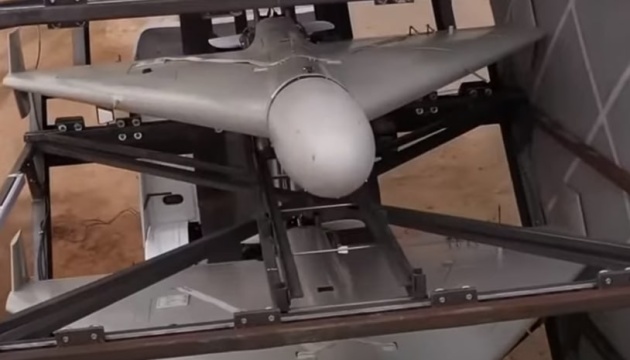

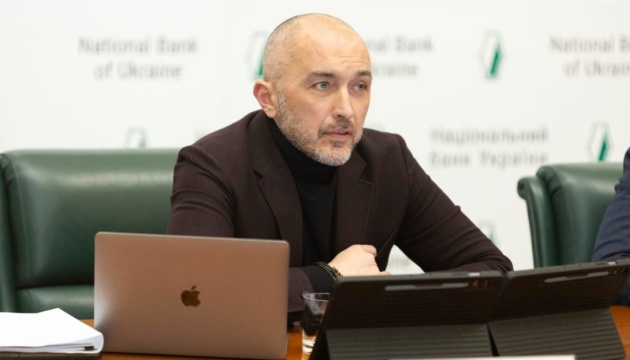

The boxing world witnessed something special last Saturday as Oleksandr Usyk knocked out Daniel Dubois at Wembley Stadium, reclaiming his undisputed heavyweight crown with a left hook he calls “Ivan” – named after a Ukrainian farm worker. But this latest triumph is just another chapter in the wild story of the 38-year-old from occupied Crimea who’s redefined what it means to be a champion.
The knockout victory capped off a remarkable year that saw Usyk twice defeat Tyson Fury, first becoming undisputed champion in May 2024’s “fight of the millennium,” then dominating their December rematch.
After that second Fury fight, boxing fans knew they were watching something special – but Saturday’s performance against Dubois proved Usyk isn’t slowing down.
His journey to the top has been a wild ride – full of unlikely twists, perfect timing, and the kind of determination that turns sparring partners into champions.
Before diving into his story, you need to understand something about Usyk – he’s probably the most entertaining champion boxing has seen in years.
“How do you feel?” asked a journalist before a 2015 fight. “I am very feel,” replied Oleksandr Usyk with a grin, creating boxing’s most endearing catchphrase.Years later, when even Cristiano Ronaldo referenced this moment in conversation with Usyk, the boxer – now much better in English – smiled and repeated his famous phrase. Just for fun. Because that’s who Usyk is.
And those English gaffes? They’ve become part of his psychological warfare. At the pre-fight press conference before the Dubois rematch, Usyk mystified reporters by repeatedly telling Dubois’ team “Don’t push the horses” – a bizarre Ukrainian idiom meaning “don’t rush.” His opponent’s trainer Don Charles finally threw up his hands: “I need a translator.” Classic Usyk, turning linguistic confusion into mind games.
Usyk wasn’t always the star of the show. He was just a sparring partner on the Ukrainian national team back then. But then fate played its hand—one guy got caught doping, another broke his hand, and suddenly Usyk got his shot.

But here’s the kicker – he was fighting guys 7-8 kilograms heavier because he didn’t have time to bulk up. And he was winning.

This pattern of turning challenges into opportunities would define his career. After a disappointing second-round loss to Italy’s Clemente Russo in the 2008 Beijing Olympics, Usyk responded by winning both European and World Championships. The story came full circle at the 2012 London Olympics, where he defeated Russo for the gold medal.

Usyk’s approach to training seems designed to redefine what’s possible. While most people struggle to hold their breath for a minute, this man casually goes without air for 4 minutes and 40 seconds—longer than some sea creatures! While larger dolphins like the bottlenose can stay underwater for 8-10 minutes, Usyk’s lung capacity actually surpasses smaller cetaceans like the Maui dolphin, which typically surfaces every 2-3 minutes.
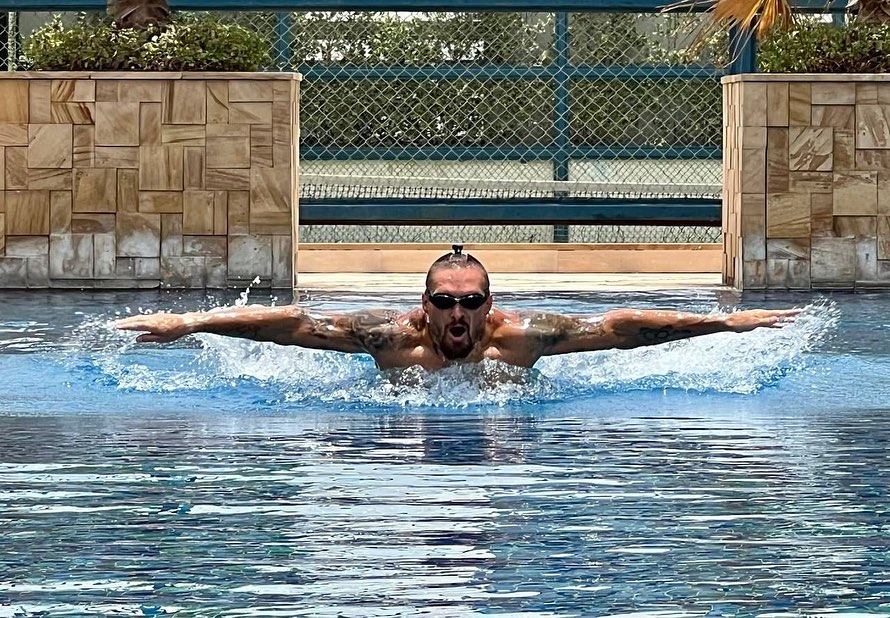
Before fighting Anthony Joshua in Saudi Arabia, he cycled 100 kilometers in 40-degree Celsius heat. He once swam 10 kilometers over five hours before a London press conference. Because apparently, regular training is too mainstream for Usyk.

If you thought Usyk’s training was unconventional, wait till you see his ring entrances. This guy doesn’t just walk to the ring – he turns every entrance into a performance art piece.
For his first clash with Fury in May 2024, he showed up dressed as a 17th-century Ukrainian Cossack warrior. We’re talking full traditional gear inspired by historical leader Bohdan Khmelnytskyi himself.

But he wasn’t done yet. For their December rematch, Usyk took things to a whole new level. Picture this: he walks out wearing this incredibly detailed Ukrainian outfit while a live choir belts out an ancient Cossack battle hymn mixed with techno beats. His robe was decked out in blue and yellow patterns with a massive Tryzub symbol – Ukraine’s national emblem. Because apparently, regular entrance music is also too mainstream for Usyk.
After knocking out Dubois with his signature left hook, Usyk explained the cultural significance behind his finishing move. “It’s a punch name, Ivan. Yeah, left hook,” he demonstrated.
“It’s Ukrainian name. Yeah, Ivan is, you know, it’s like a big guy who live in a village and work in a farm. It was a big guy, like a Cossack. What is your name? My name is Ivan. Yeah, it’s a hard punch, yeah.”
The punch that floored Dubois wasn’t just technique – it carried the soul of Ukrainian rural tradition, embodying the strength of countryside workers who’ve always been the backbone of the nation. Minutes after his victory, Usyk dedicated the win to Ukrainian soldiers: “I want to thank all Ukraine, all the guys, who are now defending our country. You allow me to be here now!”
Here’s something most people don’t know: Usyk nearly went to theater school instead of boxing. Boxing won out, but he never abandoned his artistic ambitions. After starting with a role in a 2017 Ukrainian film, The Fight Rules, and voicing cartoon characters, he’s about to hit Hollywood big time.

In 2025, you’ll see him alongside Dwayne “The Rock” Johnson in The Smashing Machine, where he portrays a Ukrainian MMA fighter.
Growing up in Simferopol, now Russian-occupied Crimea, young Usyk dreamed of football glory until financial constraints forced him to quit the sport. But his passion never faded.
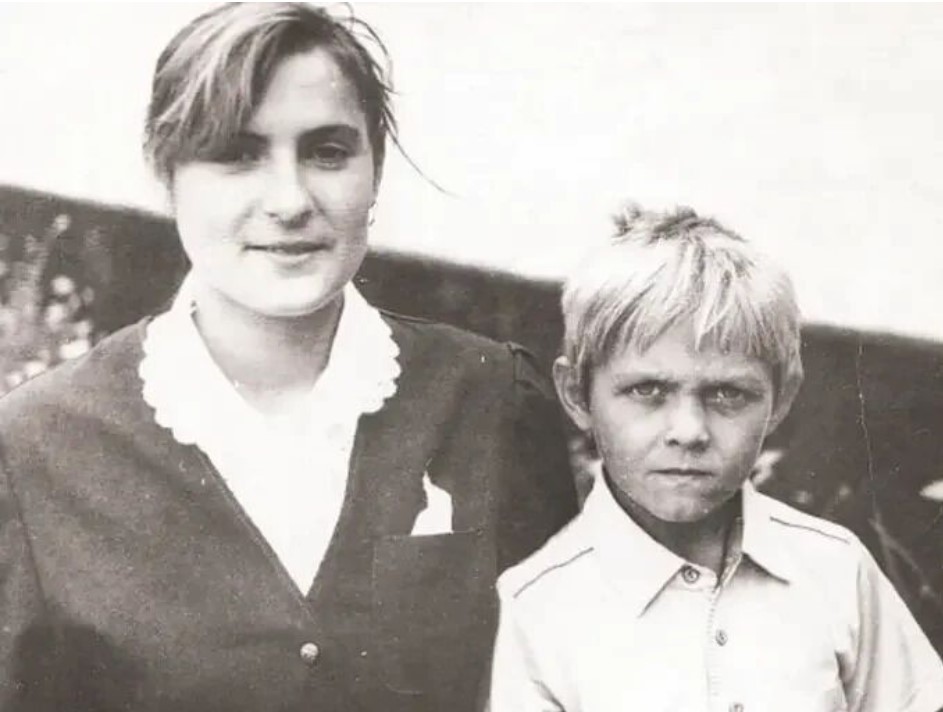
Today, he’s not just a fan—he signed a professional contract with a Ukrainian club, FC Polissia Zhytomyr, and made his debut in 2022.
The recent bout with Fury earned Usyk $114 million, but he isn’t just about boxing money. He’s built a business empire that employs a hundred people. He’s got merchandise lines, a promotion company, and even created a social network for boxers to find sparring partners.

You can’t miss Usyk in the ring – his traditional Cossack hairstyle(the mohawk-like “oseledets”) has become his signature.

He’s transformed the Ukrainian warrior tradition into a global brand, introducing millions to Ukrainian culture through both his appearance and his victory Hopak dance – as Ukrainian as borsch.
Beyond the ring, Usyk is a family man – a devoted father of four and a man of deep faith. He’s emerged as one of Ukraine’s most powerful voices on the global stage, especially as his country fights against Russian aggression.
******
Here’s another thing about Usyk – he could have had an easier path. When Russia occupied Crimea in 2014, many athletes from the peninsula faced a choice. Some stayed, some took Russian citizenship, some left. Usyk packed his bags and moved his family to Kyiv.

It wasn’t a comfortable choice. He left behind his home, his training base, and many friends. But when asked about it, Usyk answered in his characteristically straightforward way: “I’m from Crimea. But Crimea is Ukraine.” Simple as that.
Now look at him today – strutting into the ring in wildly creative outfits that always feature Ukrainian elements, from traditional patterns to Cossack symbols. It’s not just for show. Every entrance tells the same story: this is who I am, this is what I choose to be – a Ukrainian athlete bringing his nation’s fighting spirit to the global stage.
His latest victory over Dubois at Wembley proved he’s not done making history. At 38, with his undefeated 23-0 record intact, Usyk continues showing the world what Ukrainian excellence looks like – one “Ivan” punch at a time. Very feel, indeed.
Read more:
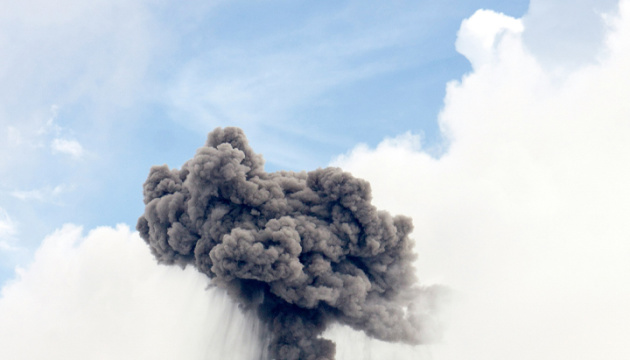
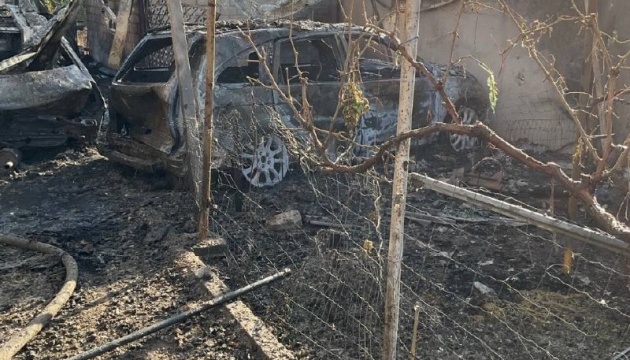
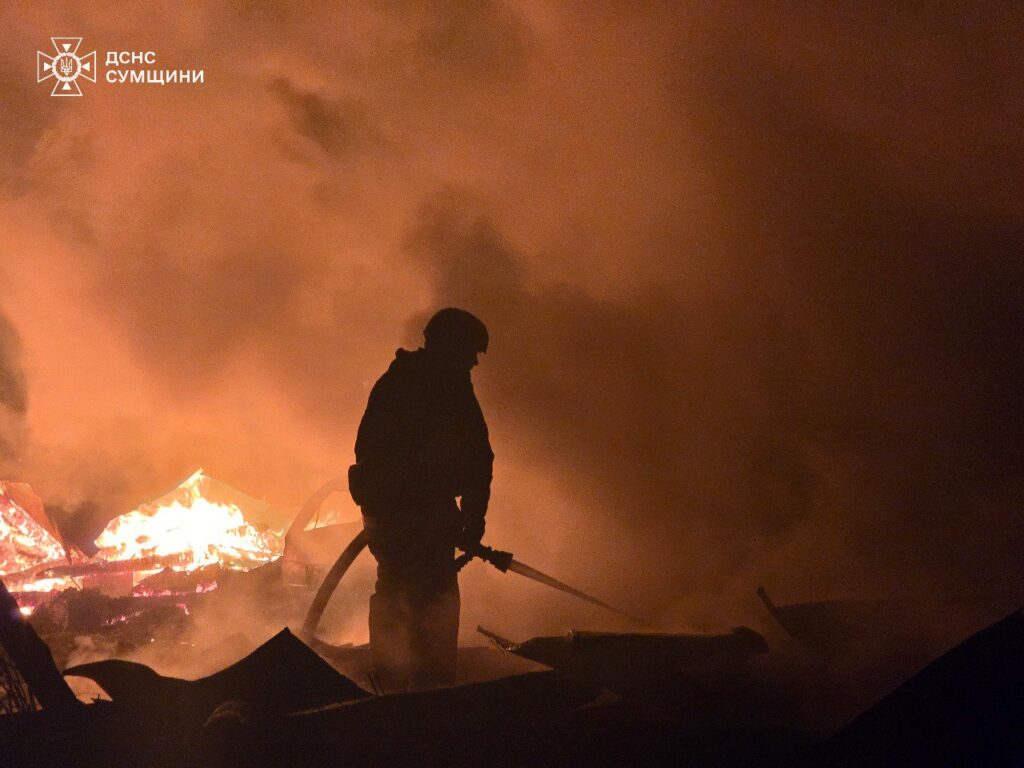
Russian forces conducted widespread drone attacks across multiple Ukrainian regions overnight on 20 July, killing at least one person and injuring several others while causing significant damage to residential areas.
The assault involved 57 Shahed strike drones and decoy aircraft, representing a relatively modest scale compared to Russia’s typical mass drone attacks, which often involve hundreds of aircraft and have reached over 700 drones in a single night.
According to the Air Forces of the Armed Forces of Ukraine, Ukrainian air defenses successfully intercepted 18 of the attacking drones, while electronic warfare systems suppressed or caused the loss of seven additional aircraft. The military reported that 32 drones struck targets across 10 locations, with debris from intercepted aircraft falling in six areas.
The deadliest impact occurred in northeastern Sumy Oblast near the front line, where a 78-year-old woman was killed during a Russian drone attack on residential areas in Svesa community, according to the State Emergency Service. Four strike drones targeted a village, causing three residential buildings to ignite immediately upon impact.
Russian terror campaign against Ukrainian civilians continues.
— Euromaidan Press (@EuromaidanPress) July 20, 2025
On the night of 20 July, Russian drones killed a 78-year-old woman and ignited three homes in a northeastern Sumy village near the front line.
Emergency responders faced dangerous delays because Russian forces… pic.twitter.com/LIeeAgSHJq
Rescue operations faced significant delays because Russian forces conducted follow-up strikes on the same locations where emergency workers needed to operate. Despite the dangerous circumstances and intense fire conditions, emergency personnel successfully extinguished all blazes and prevented the fire from reaching two nearby residential buildings.
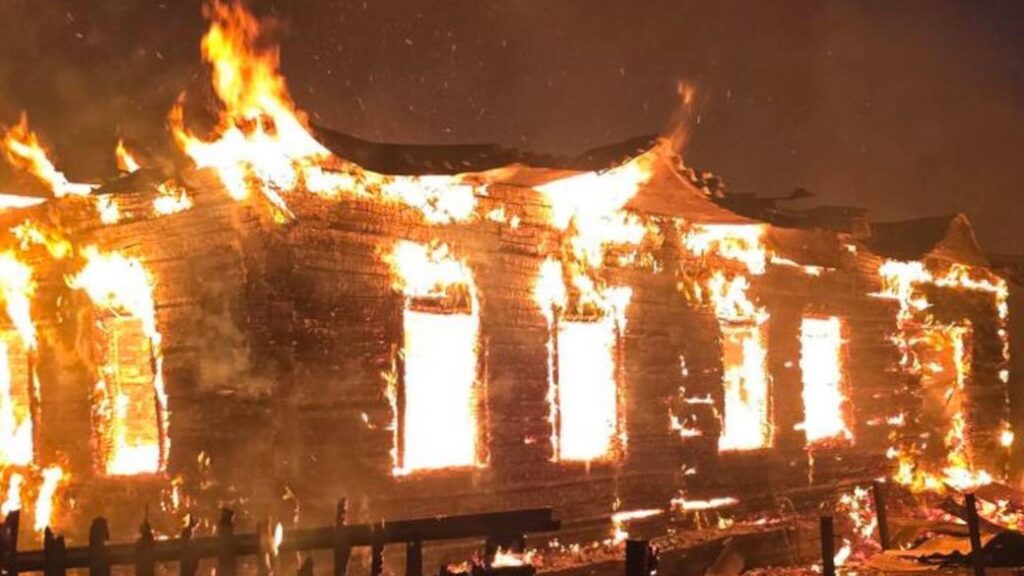
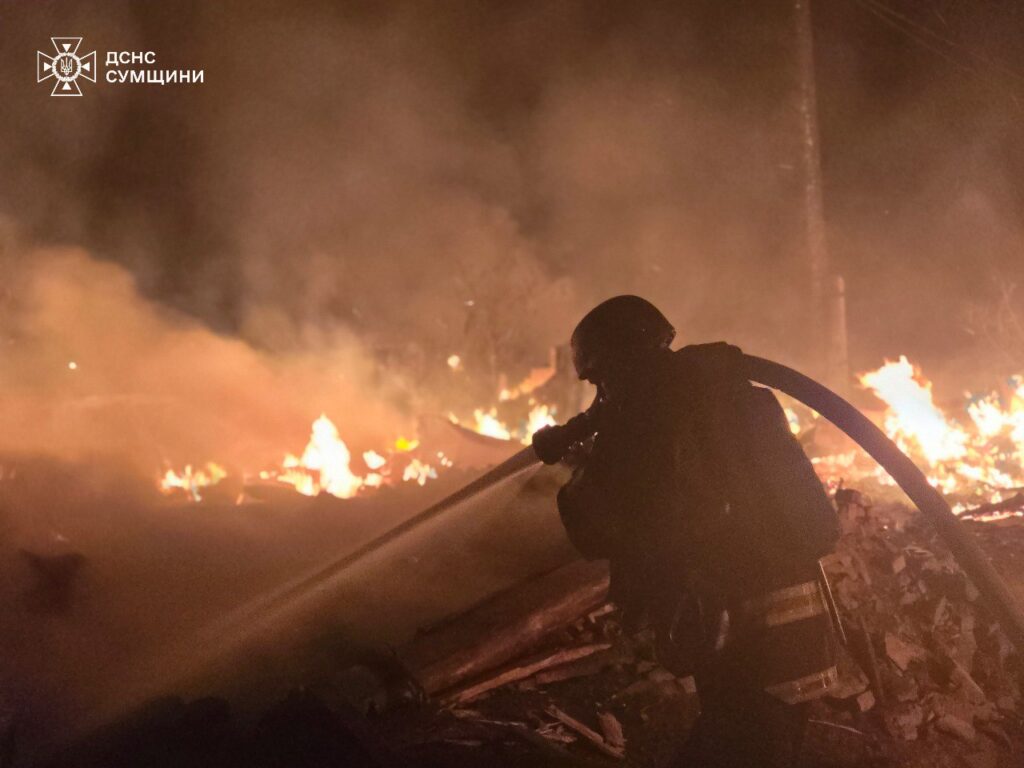
Southern Zaporizhzhia and surrounding areas faced intensive attacks involving at least 14 strike drones and two multiple rocket launcher system strikes, according to Regional Military Administration head Ivan Fedorov. The bombardment damaged seven private residences and caused window and facade damage to apartment buildings, while also sparking multiple fires. A 69-year-old woman sustained injuries in the attacks.
The nearby settlement of Prymorske also came under assault, where a Russian drone directly struck a residential building, injuring two elderly women aged 64 and 73.
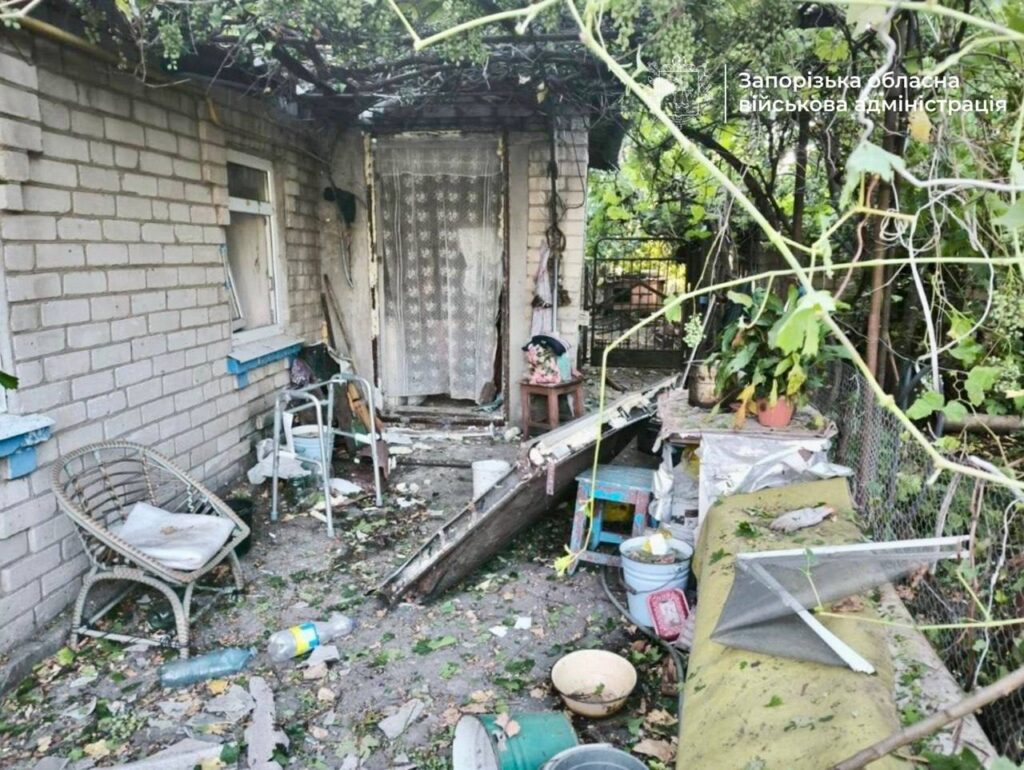
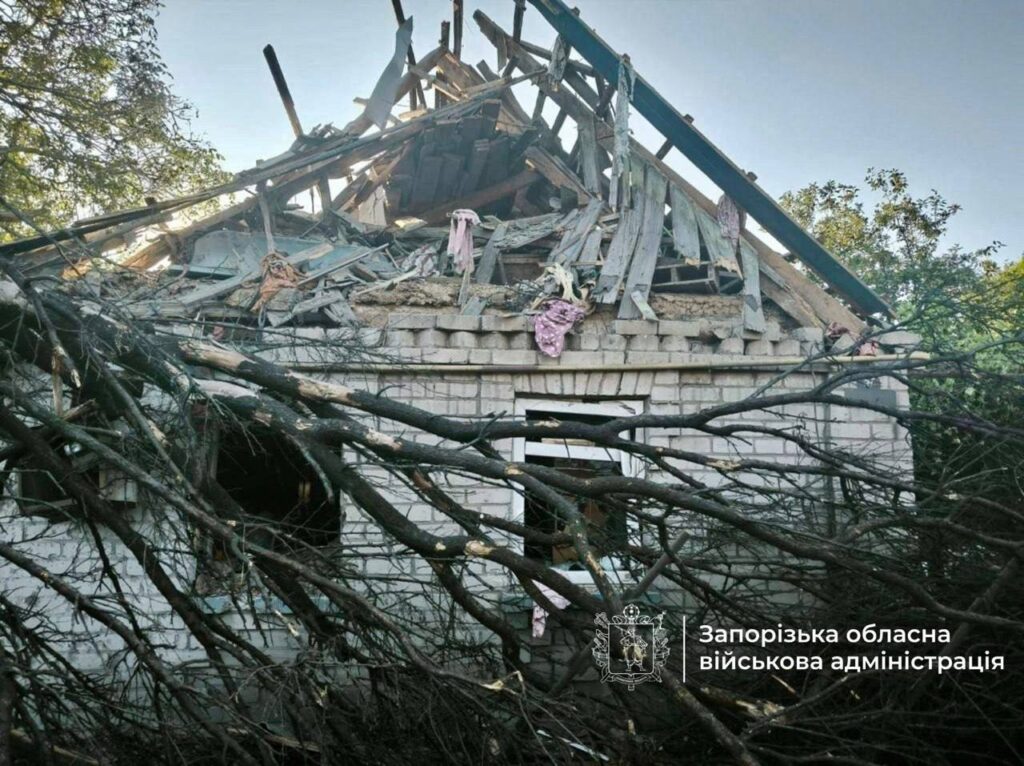
In southern Kherson Oblast, Russian forces targeted the settlement of Zymivnyk, resulting in injuries to a 17-year-old girl and her 51-year-old father, both of whom required hospitalization, according to Regional Military Administration head Oleksandr Prokudin.
“As a result of the enemy attack, the 17-year-old girl sustained explosive and traumatic brain injuries, concussion, and shrapnel wounds to the shin. The 51-year-old man sustained explosive trauma, thermal burns to the chest and poisoning from combustion products,” Prokudin reported. Both victims are receiving medical treatment at local hospitals.
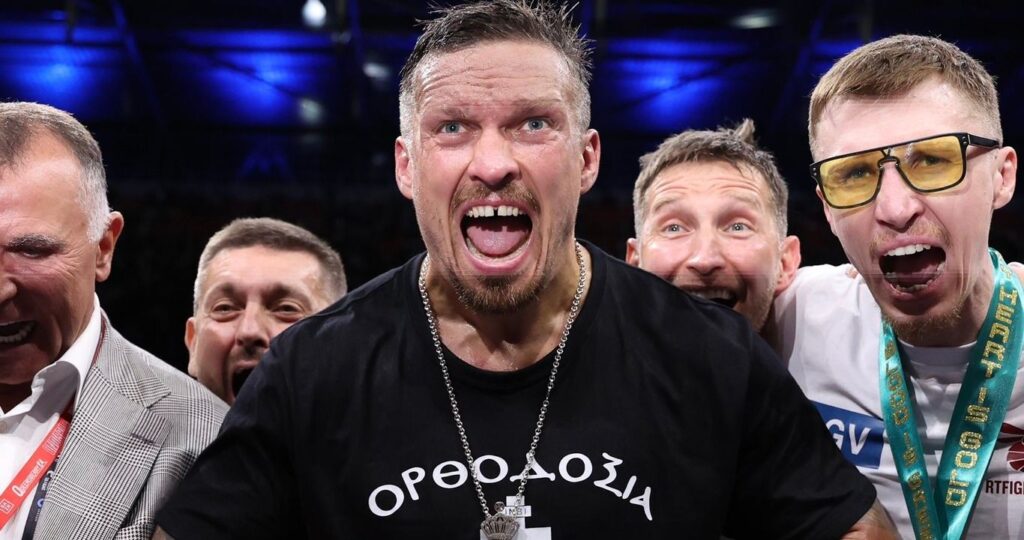
Oleksandr Usyk knocked out Daniel Dubois in the fifth round at Wembley Stadium on 19 July 2025 to become undisputed heavyweight champion for the second time, using a left hook he calls “Ivan” after a Ukrainian farm worker.
The 38-year-old from occupied Crimea achieved something even Muhammad Ali never managed – becoming undisputed heavyweight champion twice in the modern four-belt era. Ali won the heavyweight title three times, but during simpler periods with fewer sanctioning bodies. Usyk’s achievement is rarer: undisputed championships in two different weight classes while navigating boxing’s most fragmented landscape.

Usyk ended the fight with what he calls his signature punch: “Ivan.” Asked about it after the fight, the champion explained why he named his left hook after a Ukrainian everyman.
“It’s a punch name, Ivan. Yeah, left hook,” Usyk said, demonstrating the motion. “It’s Ukrainian name. Yeah, Ivan is, you know, it’s like a big guy who live in a village and work in a farm. It was a big guy, like a Cossack. What is your name? My name is Ivan. Yeah, it’s a hard punch, yeah.”
The left hook that dropped Dubois for the final time carried more than technique – it embodied the kind of strength Ukrainians associate with their countryside, the tough rural workers who’ve always been the backbone of the nation.
Before Usyk entered the ring, another voice from occupied Crimea commanded the stadium. Singer Nadia Dorofeeva performed Ukraine’s national anthem before 90,000 spectators, creating one of those moments where sport becomes something bigger.
Dorofeeva, who gained fame as part of “Vremya i Steklo” before going solo, has become a vocal supporter of Ukraine during the war. Her anthem performance before the fight connected two Crimean natives on British soil, both representing their occupied homeland on a global stage.
Right after winning, Usyk delivered the message that mattered most to him – acknowledging the soldiers who make his career possible.
“I want to thank all Ukraine, all the guys, who are now defending our country,” Usyk said in the ring. “I received many messages yesterday and today as well from various units, who are defending my country on the front line. Guys, Glory to Ukraine! You are incredible! You allow me to be here now!”
The champion’s words connected his boxing triumph directly to Ukraine’s broader fight for survival. While Usyk dominated at Wembley, Ukrainian forces were engaged in combat that determines whether their country continues to exist.
Ukraine’s new Prime Minister Yulia Svyrydenko praised Usyk’s victory as “a triumph of will and discipline,” writing on Facebook:
“Every victory charges us with a good mood. Congratulations, champion! Thank you for everything you do for Ukraine.”
This victory built on Usyk’s historic achievement in May 2024, when he defeated Tyson Fury by split decision to become the first undisputed heavyweight champion since Lennox Lewis in 1999. That fight was massive – finally unifying all heavyweight belts after 25 years of fragmentation.
But Usyk couldn’t keep all four belts. Boxing politics forced him to choose between defending against Fury in their contracted rematch or facing IBF mandatory challenger Dubois. He vacated the IBF title, allowing Dubois to claim it. Saturday’s fight put the championship back together.
The first Usyk-Dubois fight in August 2023 ended controversially when a disputed low blow in the fifth round gave Usyk time to recover before he knocked out Dubois in the ninth. This time was cleaner – Usyk dominated from the start before finishing Dubois decisively in round five.
Usyk’s professional record now stands at 23-0 with 14 knockouts. He’s beaten every top heavyweight of his generation – Anthony Joshua twice, Fury twice, and now Dubois twice. His amateur record of 335 wins and 15 losses included Olympic gold in 2012 and World Championship gold in 2011.
The Ukrainian’s next move remains unclear. At 38, he’s hinted this might be among his final fights. Potential opponents include another Fury trilogy fight, or mandatory challengers from various sanctioning bodies.
Usyk’s journey represents something larger than boxing success. When Russia occupied Crimea in 2014, many athletes from the peninsula faced difficult choices. Usyk packed up his family and moved to Kyiv, choosing Ukrainian identity over convenience.
His ring entrances always feature Ukrainian elements – traditional patterns, Cossack symbols, his distinctive “oseledets” haircut. It’s not performance; it’s identity. Every fight becomes a statement about what he chooses to represent.
Saturday’s victory delivered another moment of Ukrainian excellence during wartime, proving that Ukrainian athletes continue performing at the world’s highest levels while their country fights for survival. For Ukrainian fans watching globally, Usyk’s left hook named “Ivan” carried the strength of their rural traditions straight through a British opponent’s guard.

